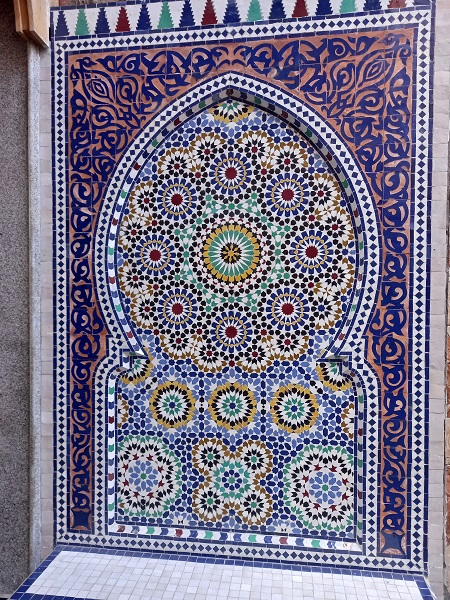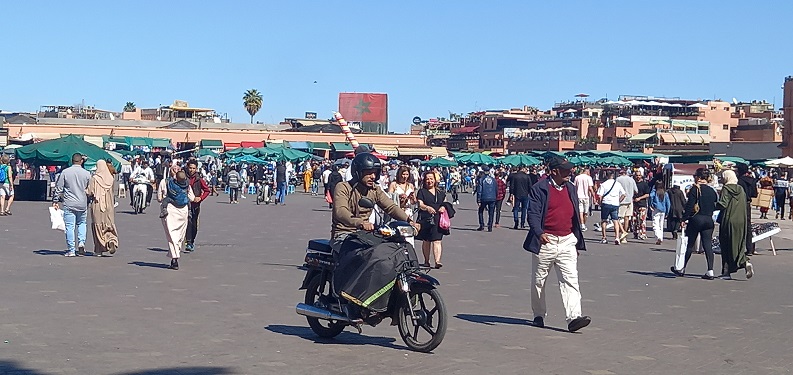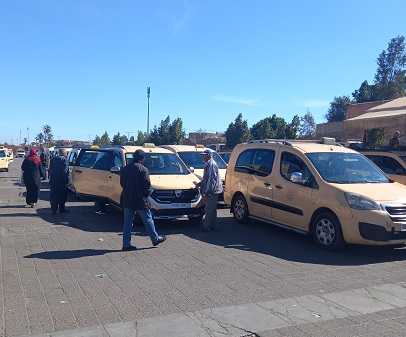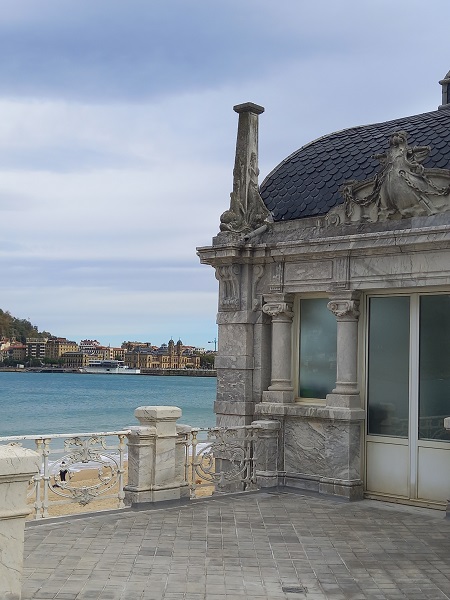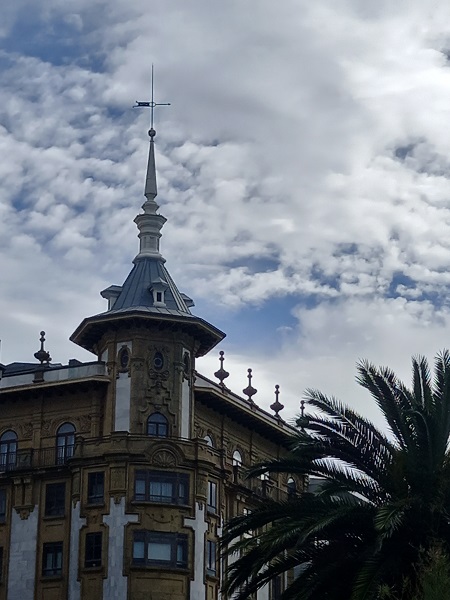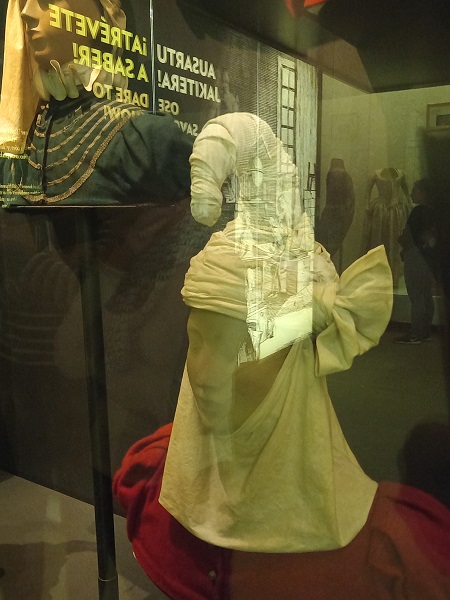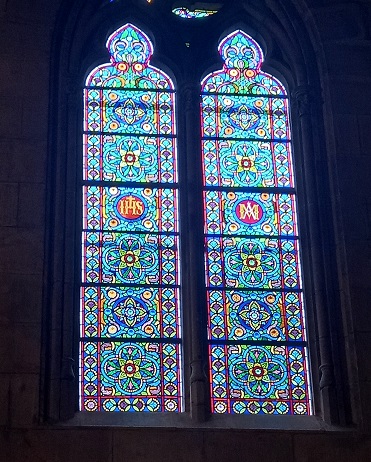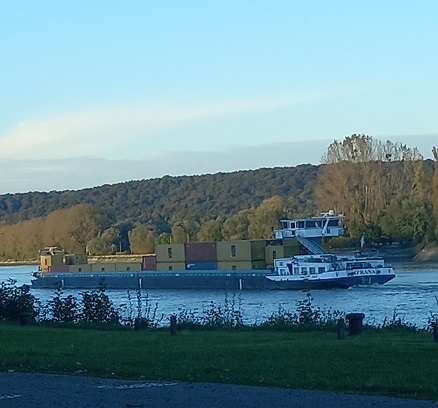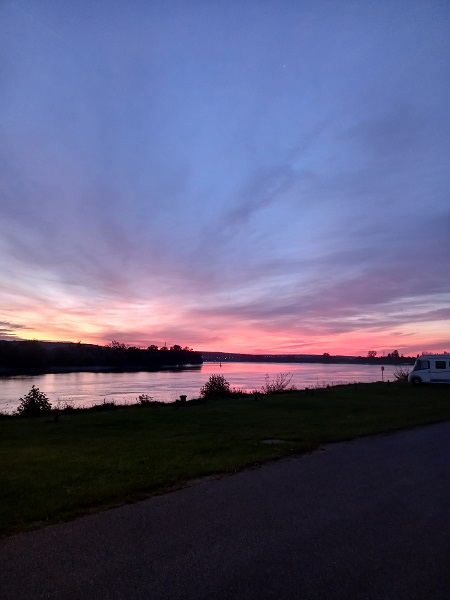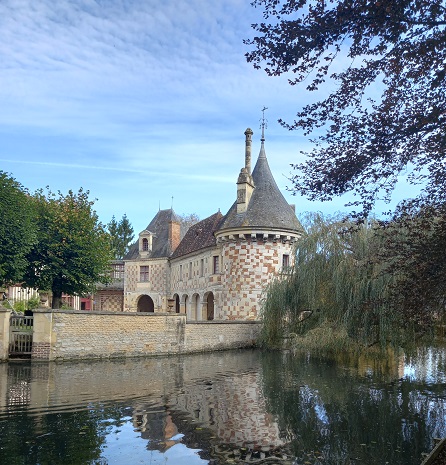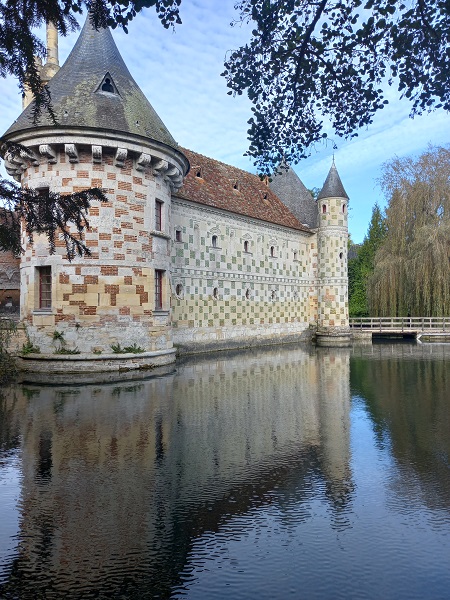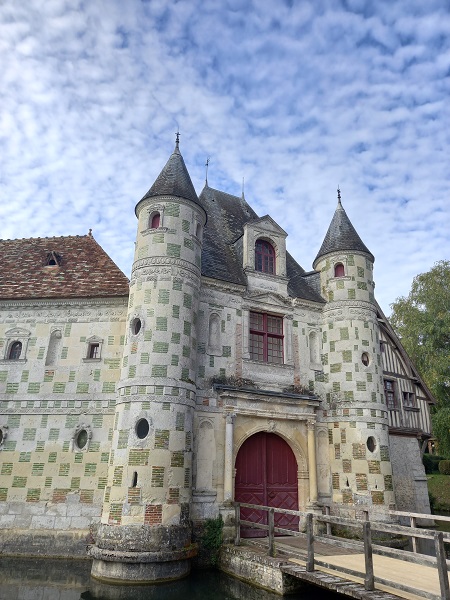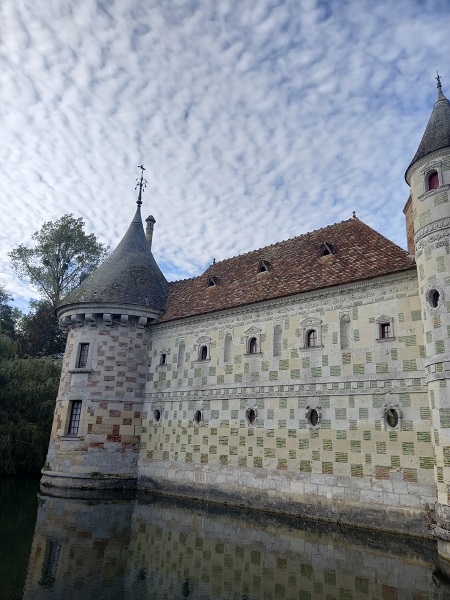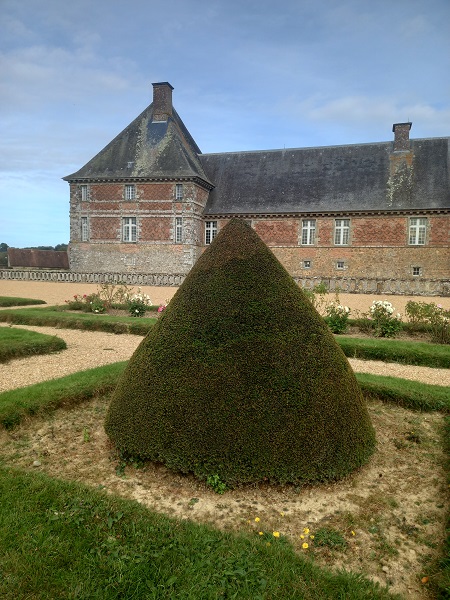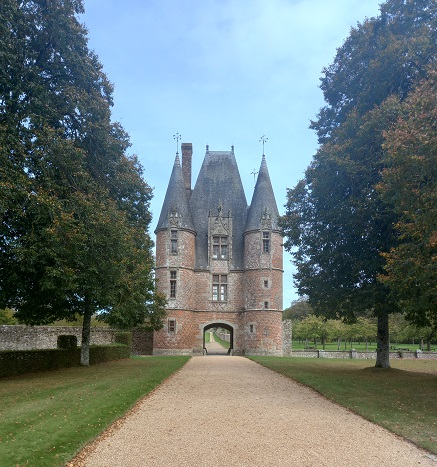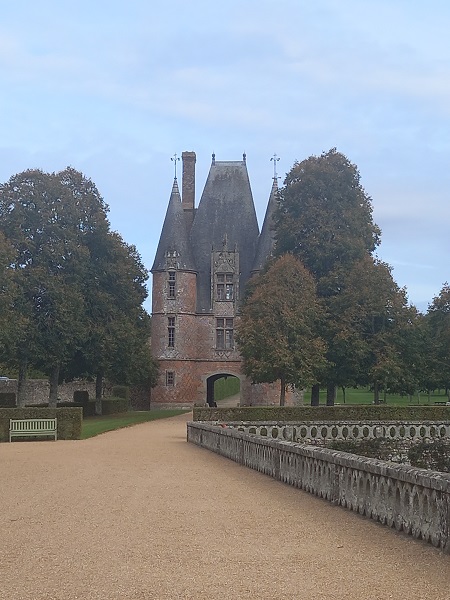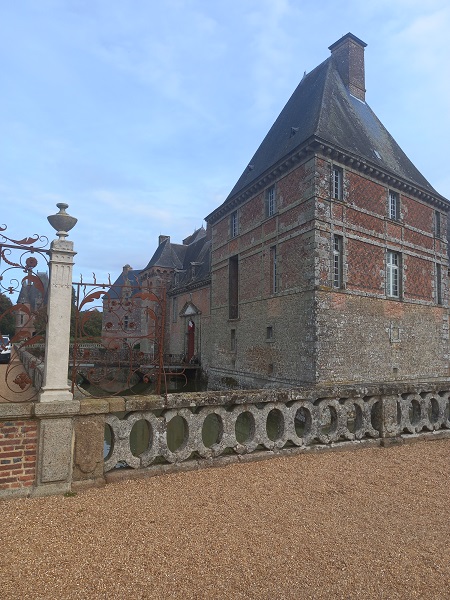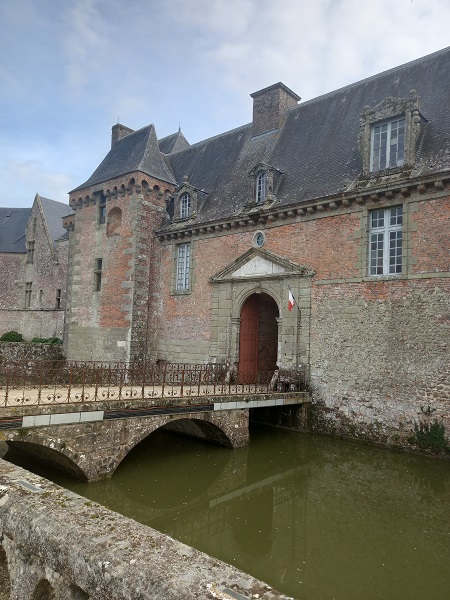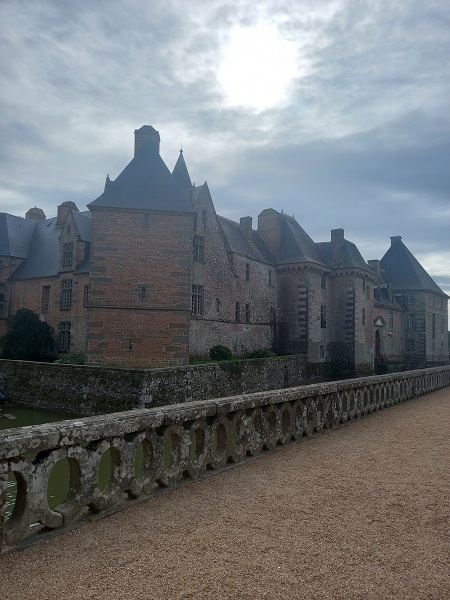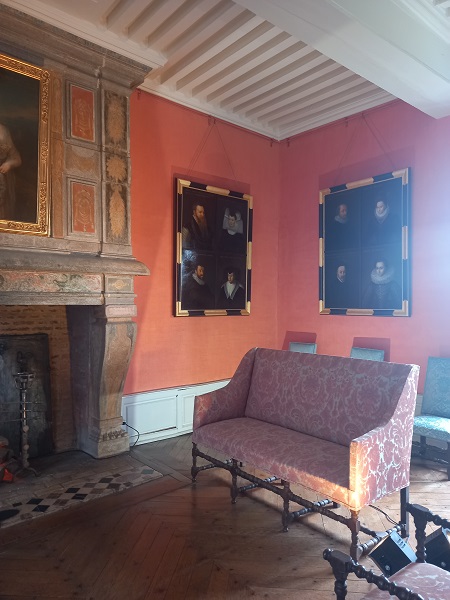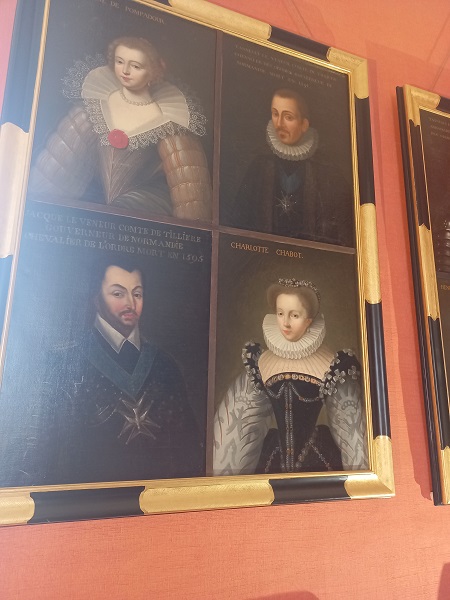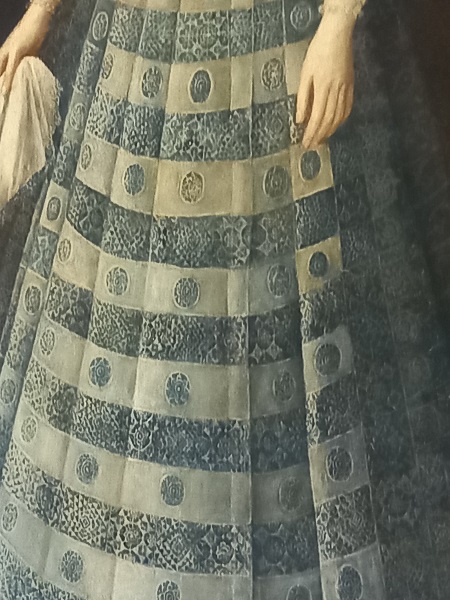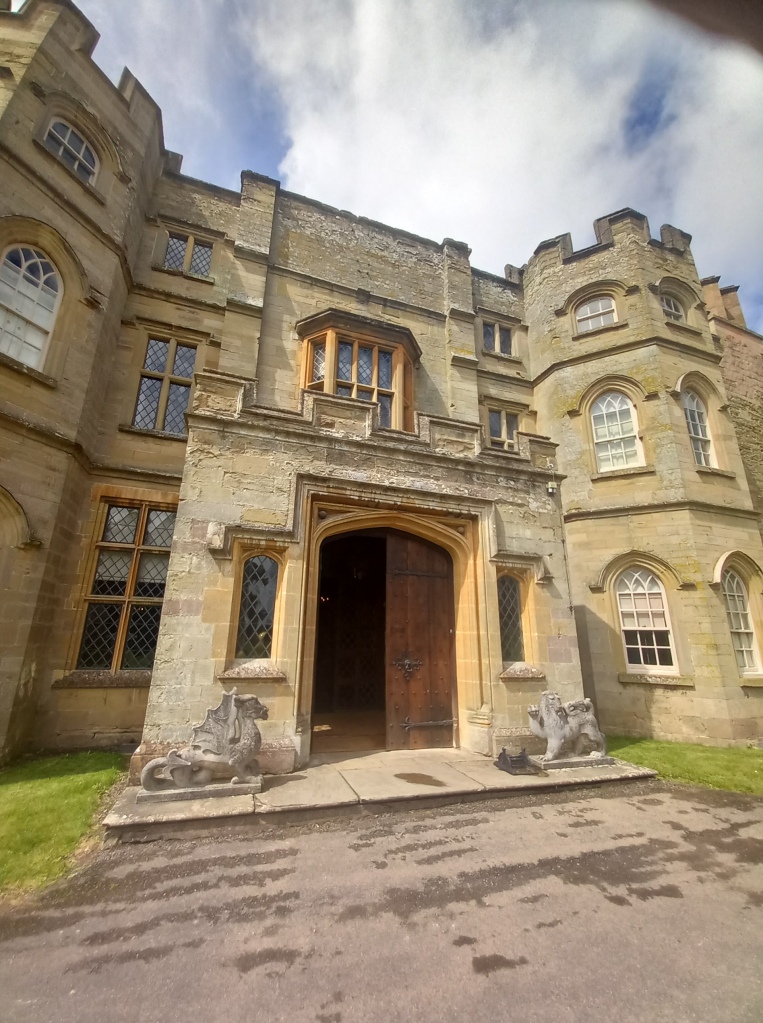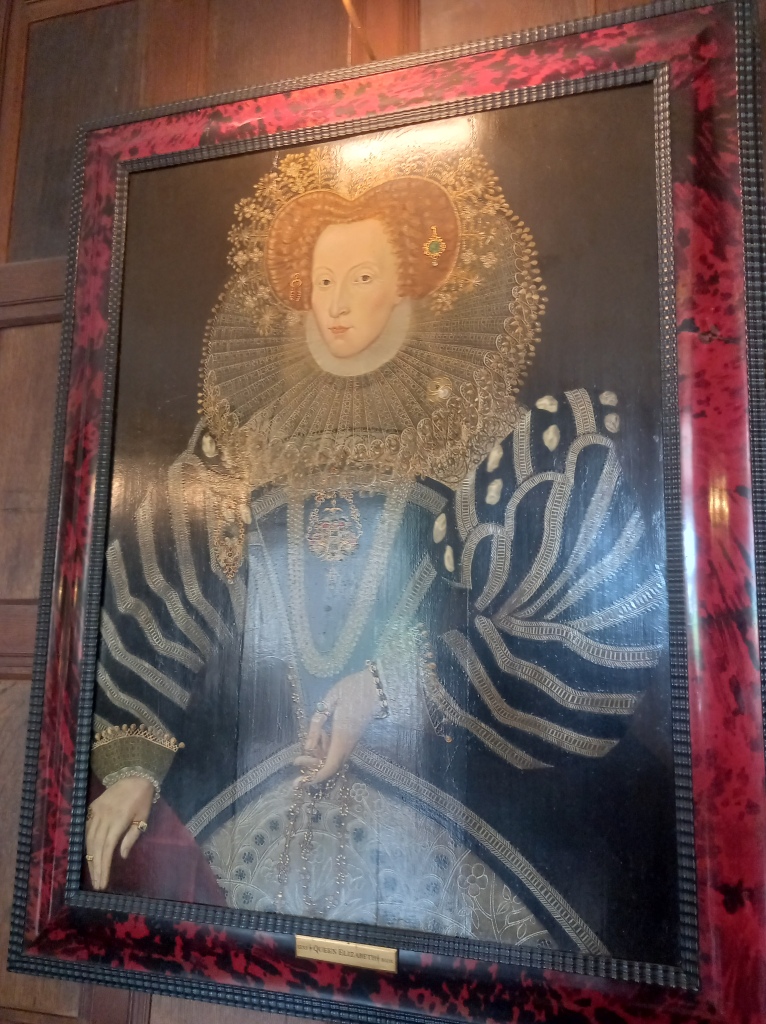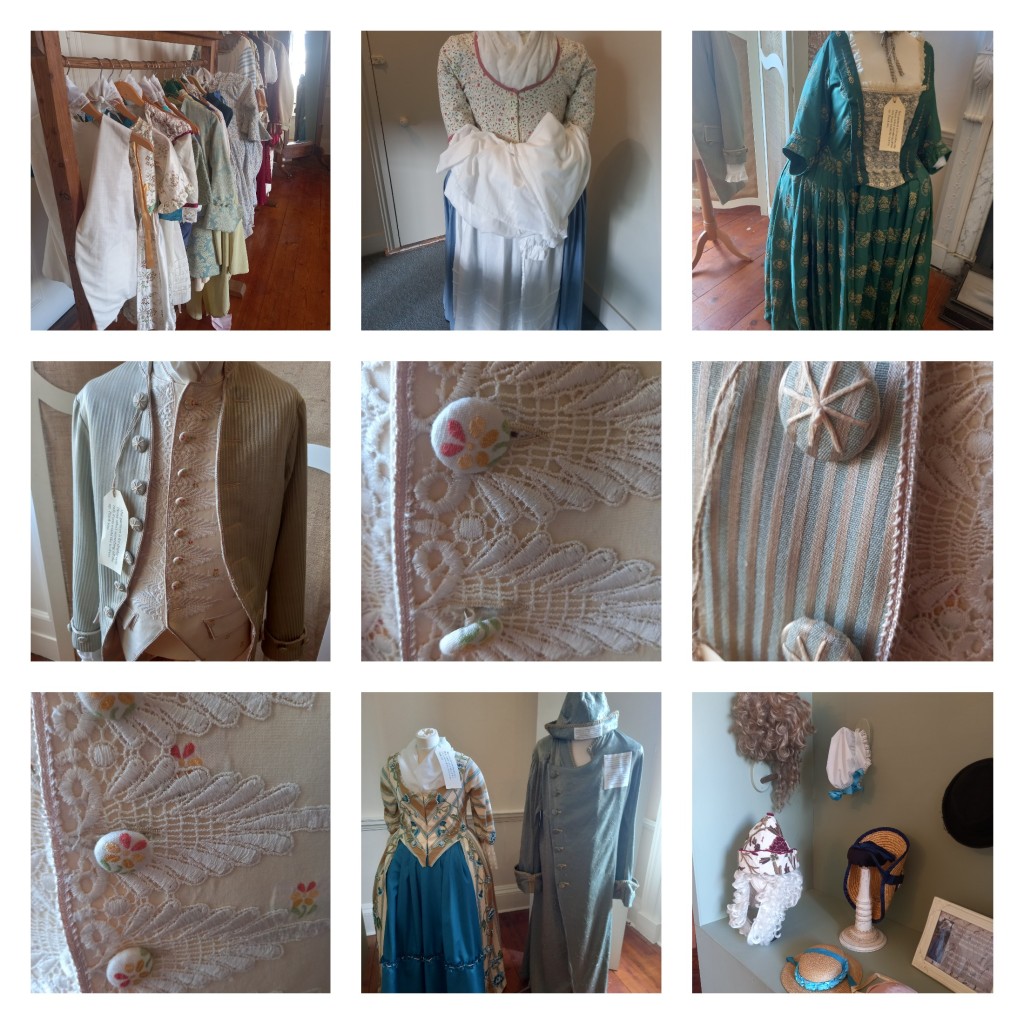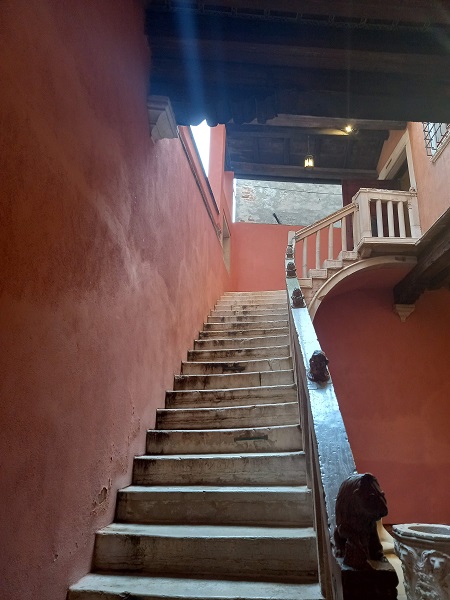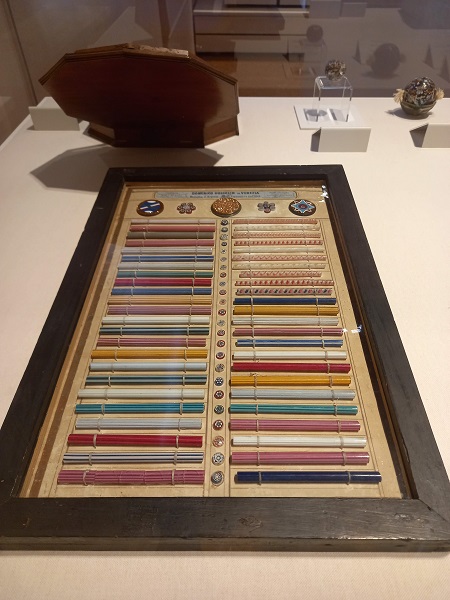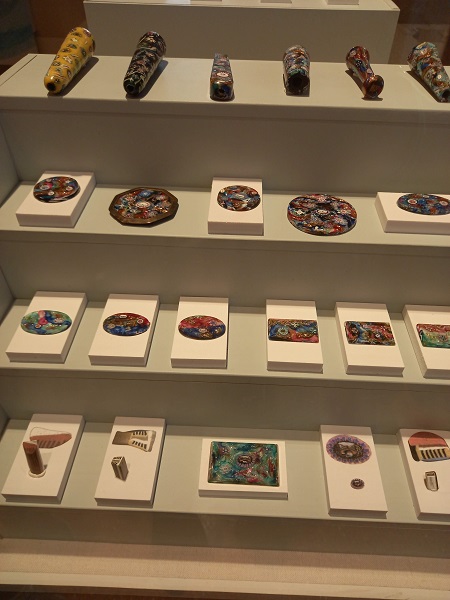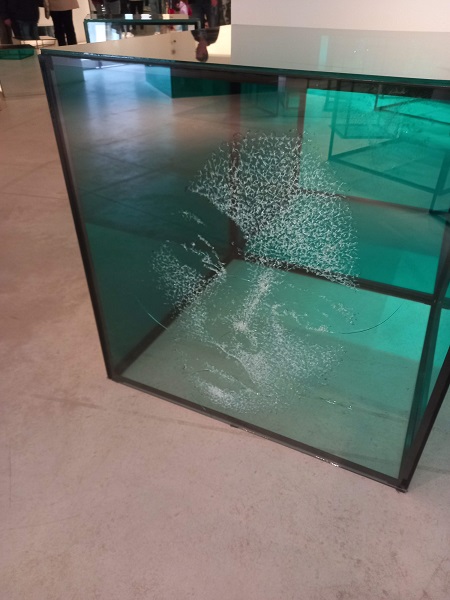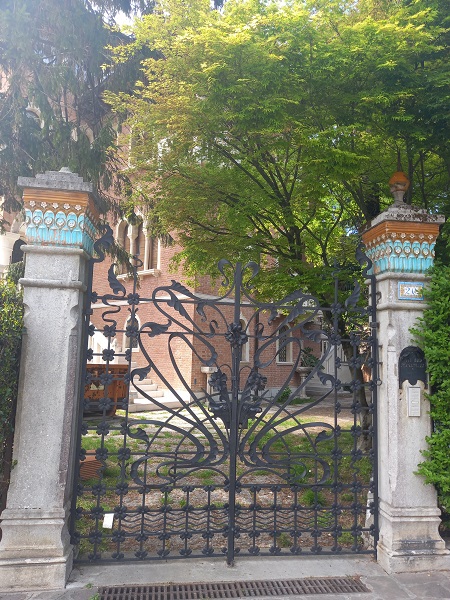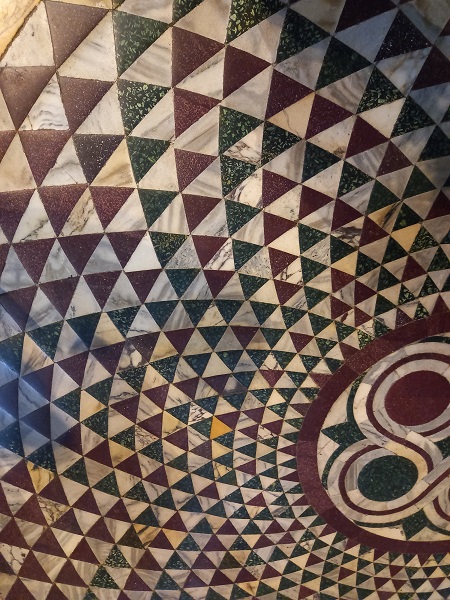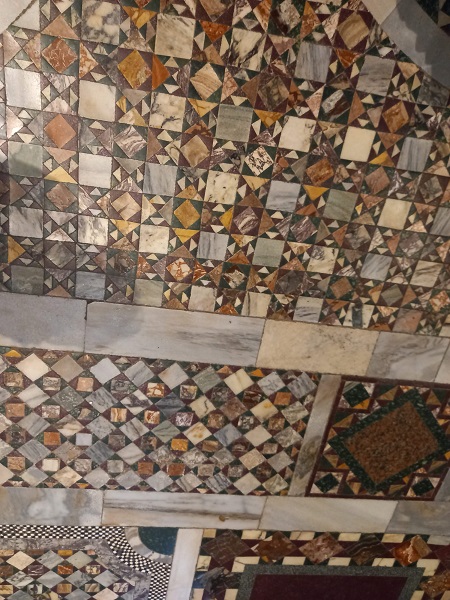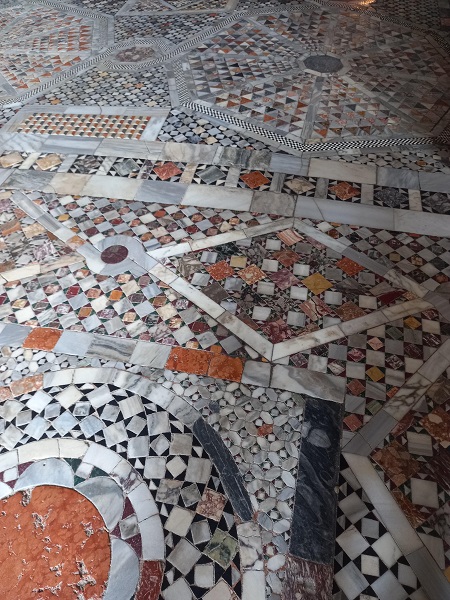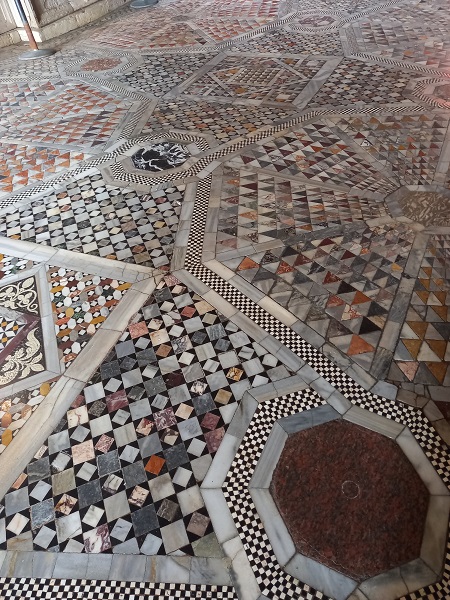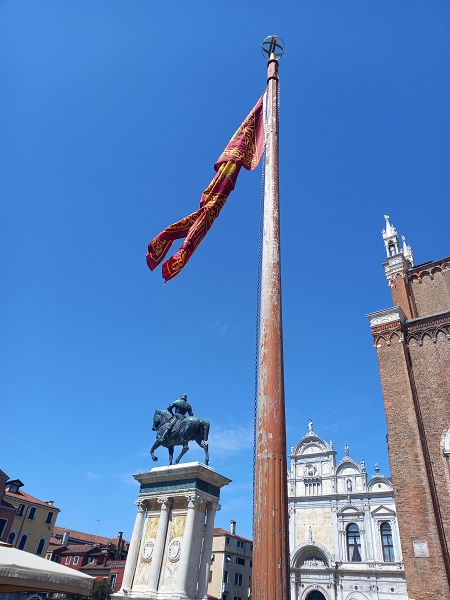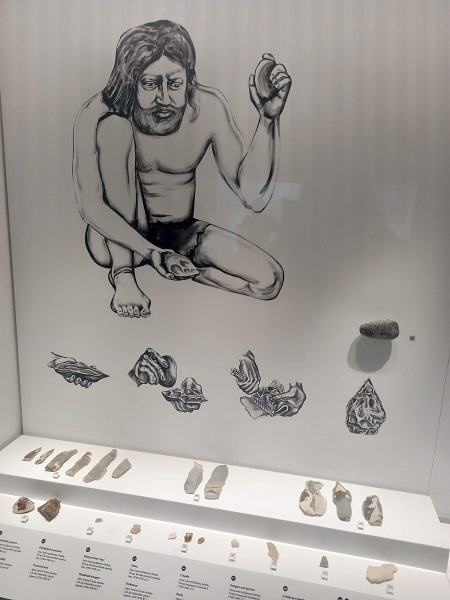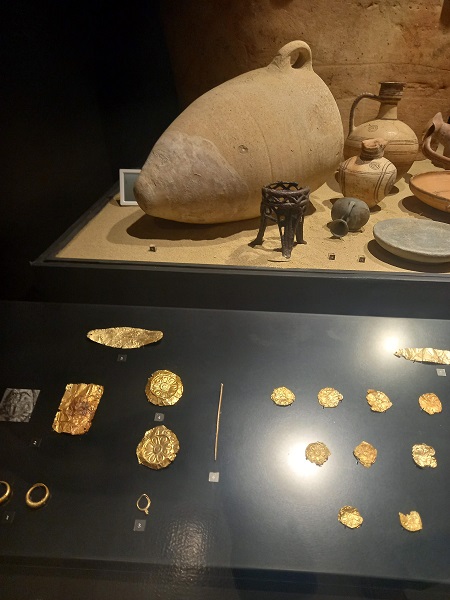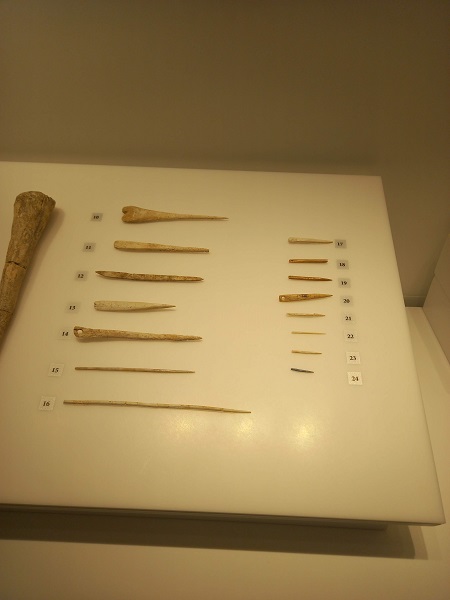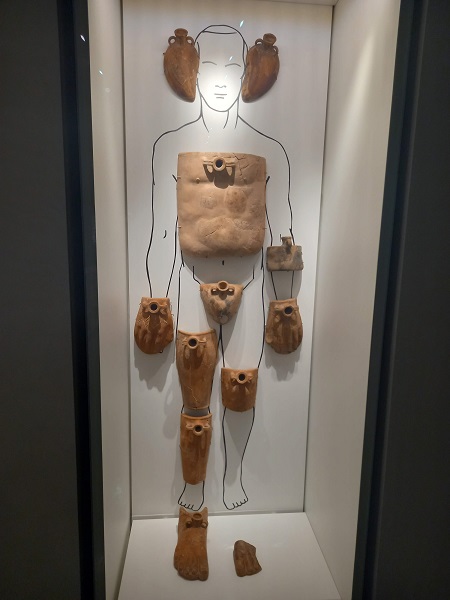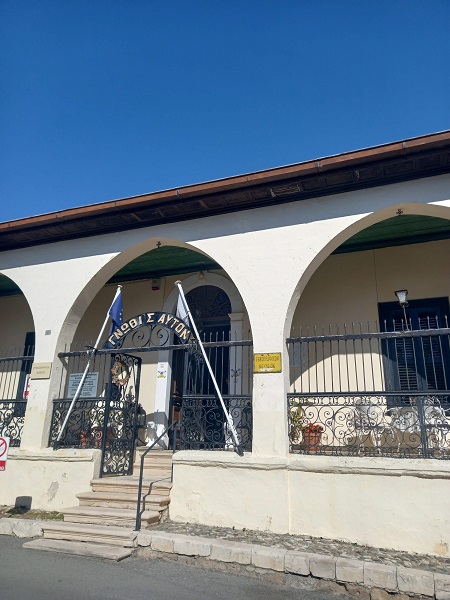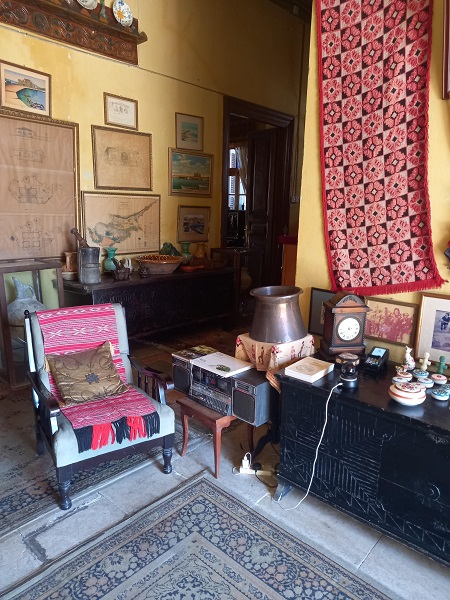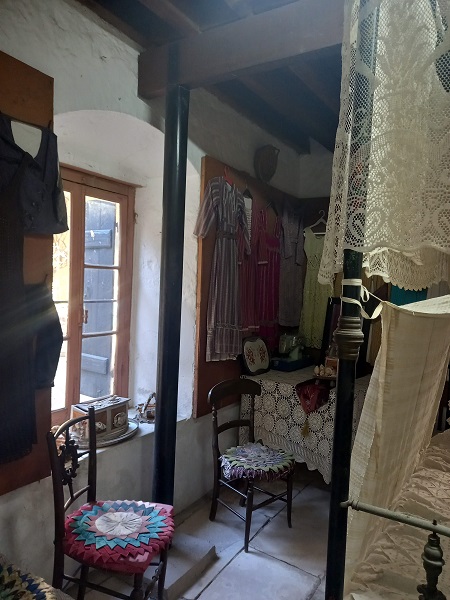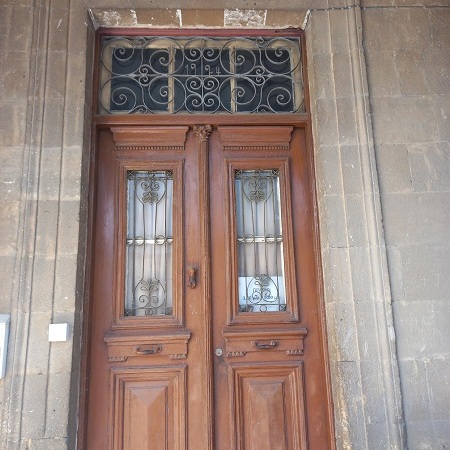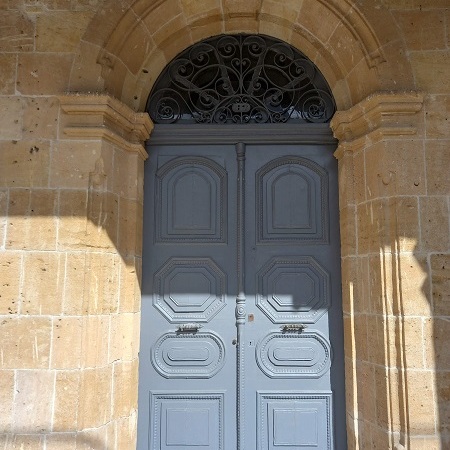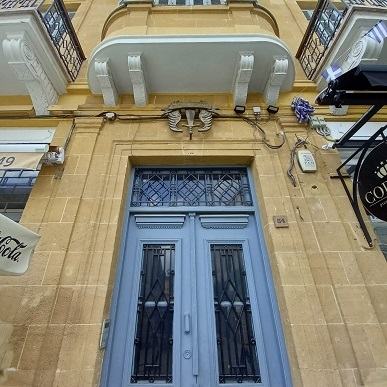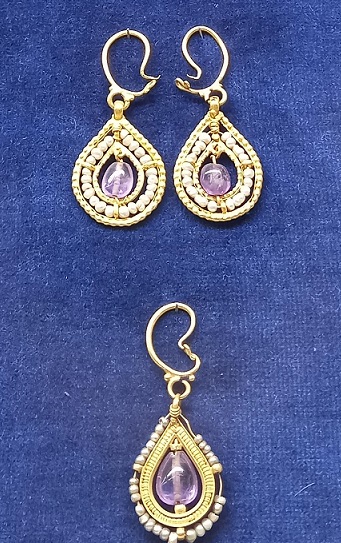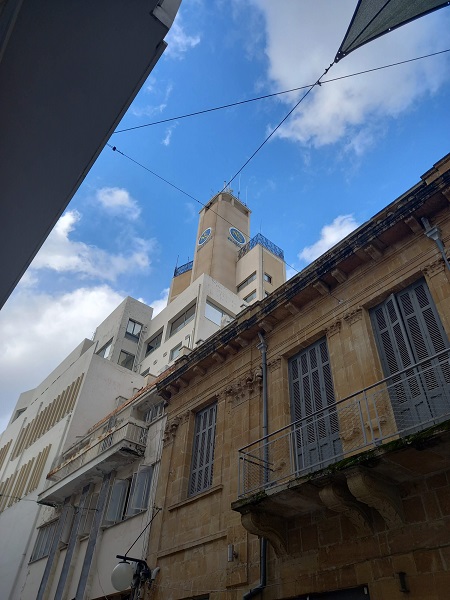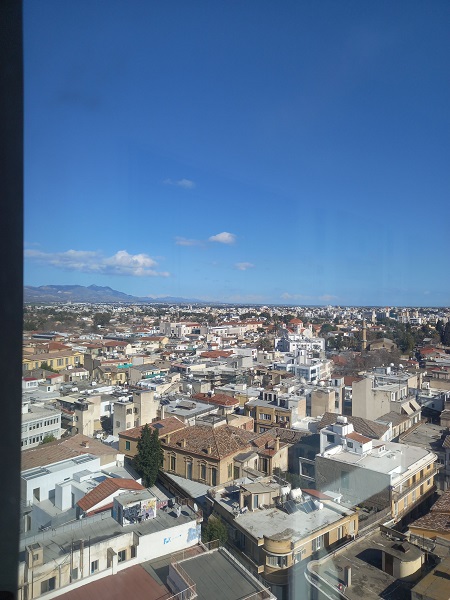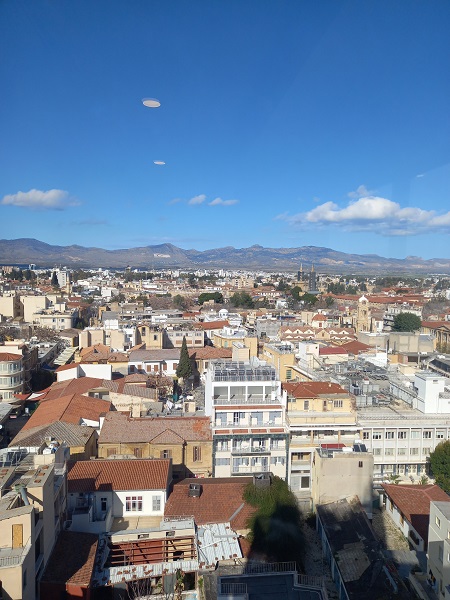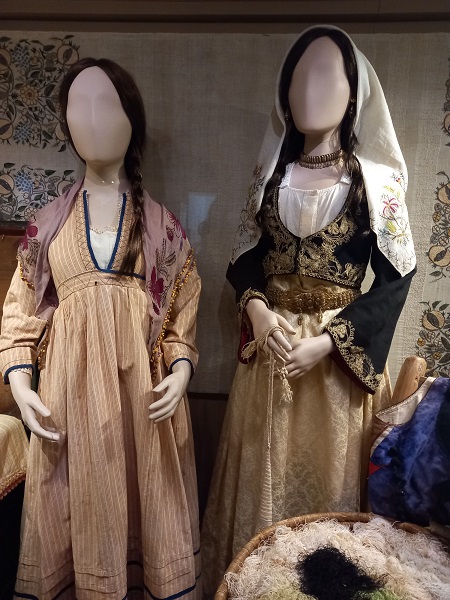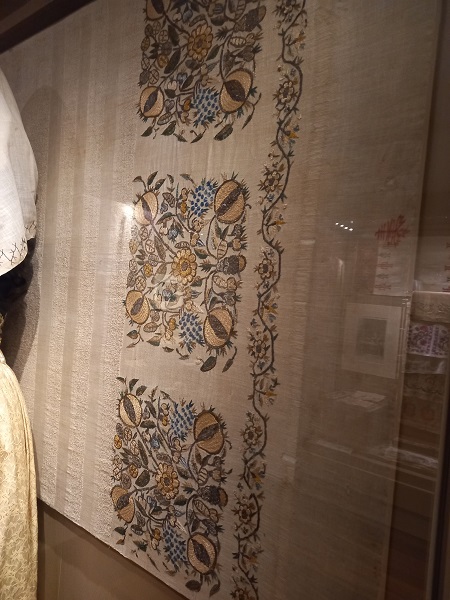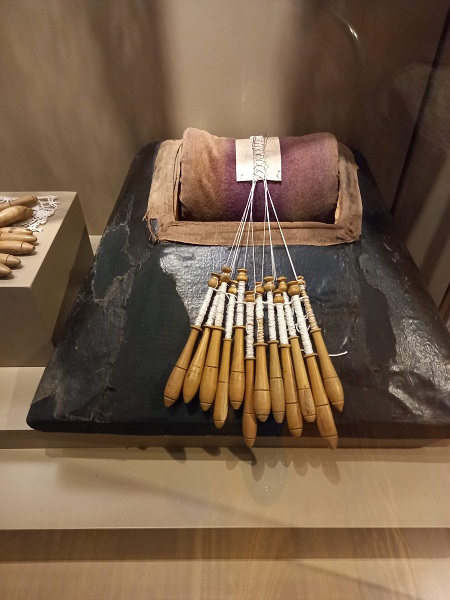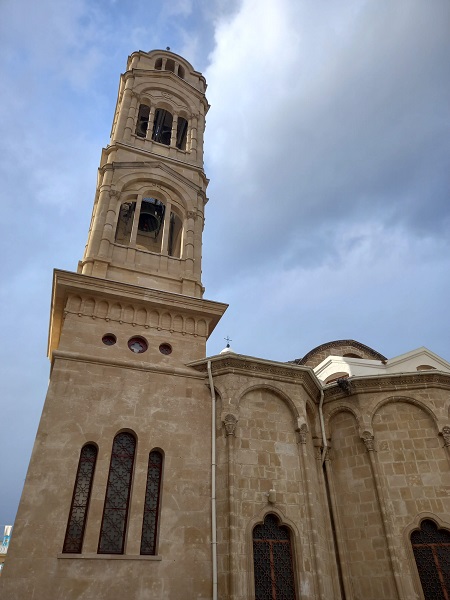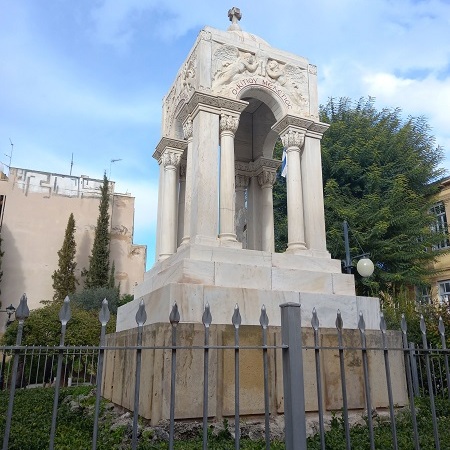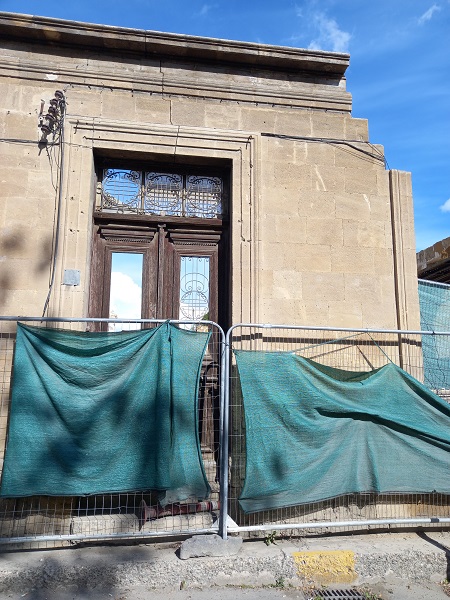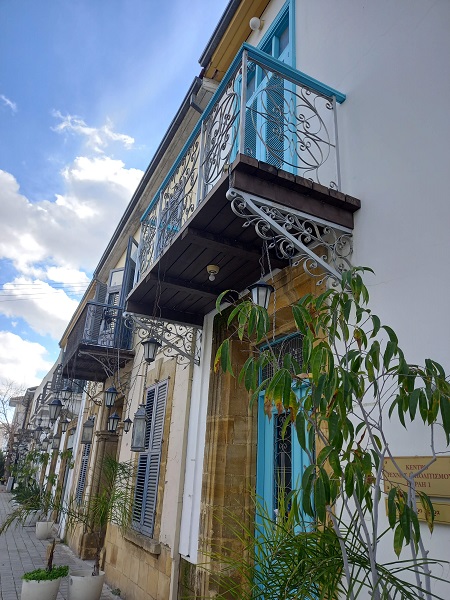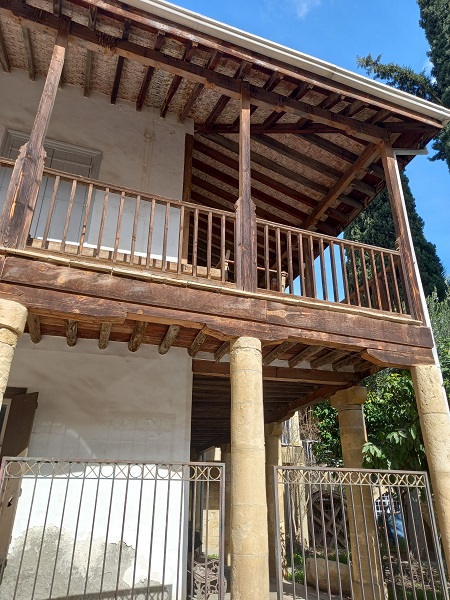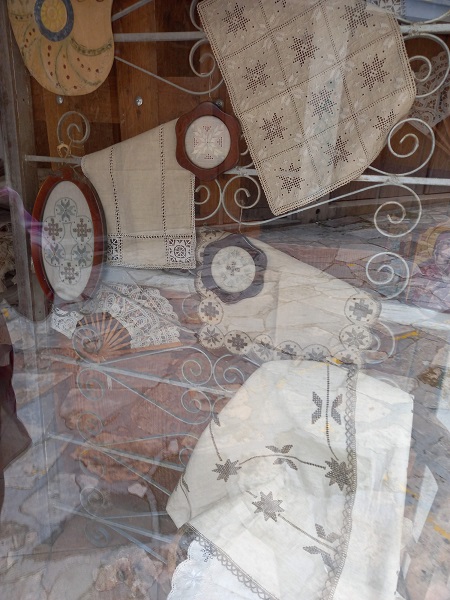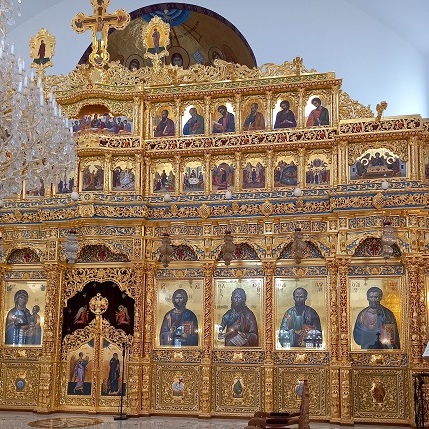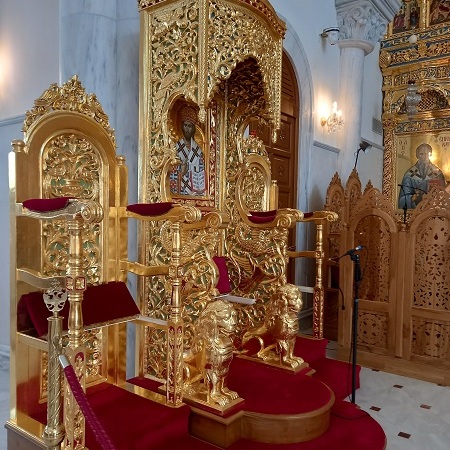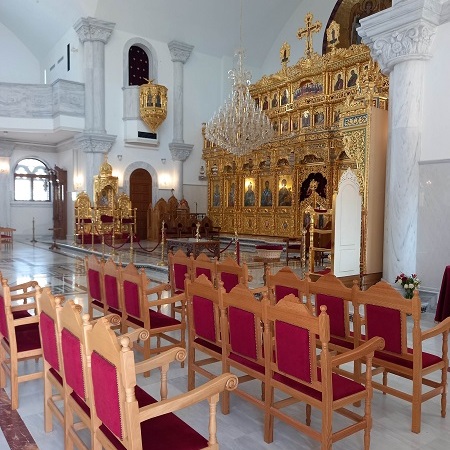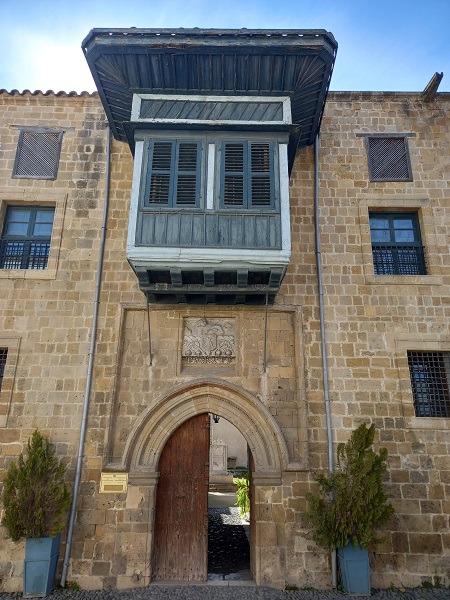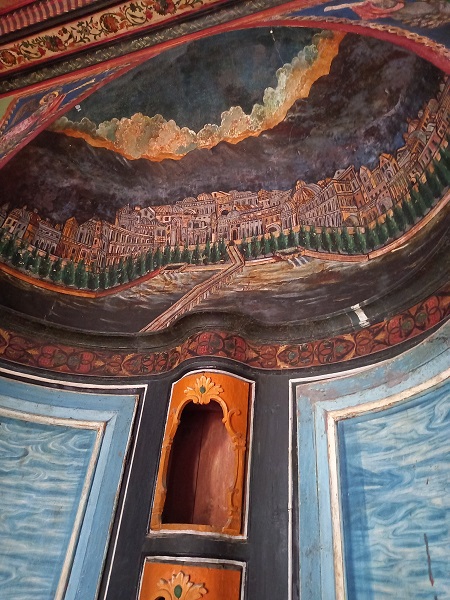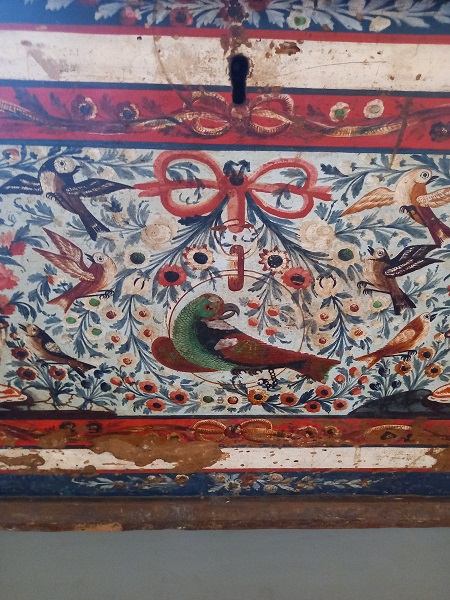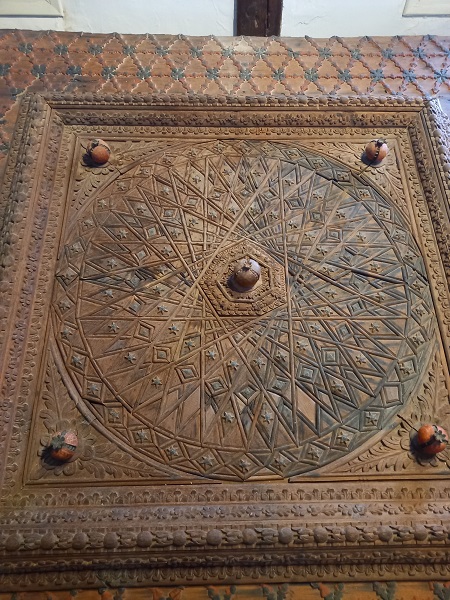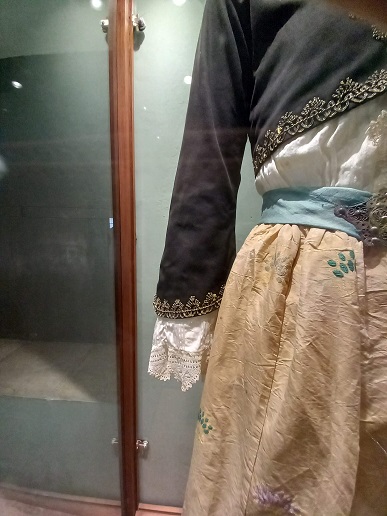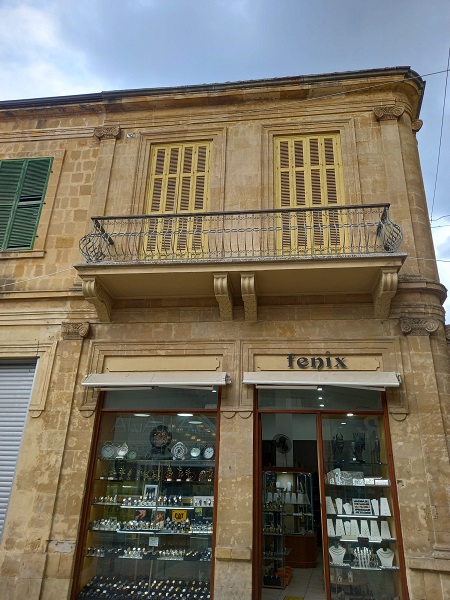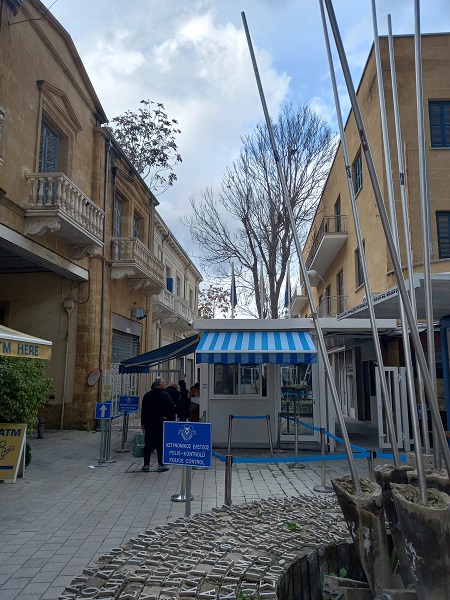The lasting impression from Morocco is a culture with just so much rich adornment. So many beautiful wood carvings on doors and ceilings, incredible plasterwork, endless mosaics, decorated shoes, beautiful clothes, an absolute riot of colour and pattern that is breath taking and bedazzling. Now back in England it all seems a bit plain in comparison, and although it is lovely to be here, I am missing the tiles and the gorgeousness of it all.
Marrakesh was a great way to end the tour. I did originally wonder if I should have done it the other way round, and ended up at the peaceful seaside resorts of Essouria and Agadir, but on reflection am happy with the way it turned out. Morocco is a place of so much colour, and noise and vibrancy, (and traffic!), that it was probably better to ease into it.
Most days in Marrakesh I visited the Jemaa el – Fnaa Square in the centre of the city. I have been before and knew that it is the lively heart of the medina, with so many stalls, and restaurants, and entertainers of all sorts. It is noisy and chaotic and wonderful!
As well as all the daytime offerings, such as the horse carriages and the many cafes and juice bars, every evening from around 4pm a whole extra set of temporary food stalls get built, such a lot of work each day. I sat one of the days with another cup of delicious tea just watching all of the frantic activity.
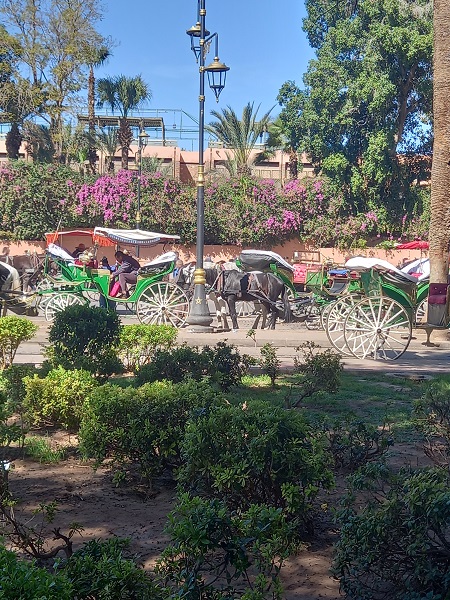
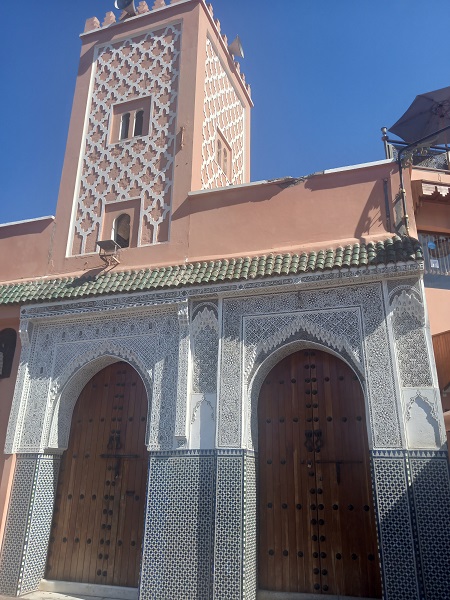
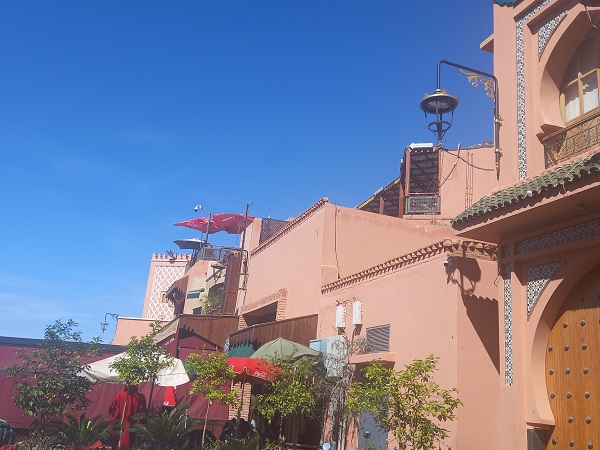
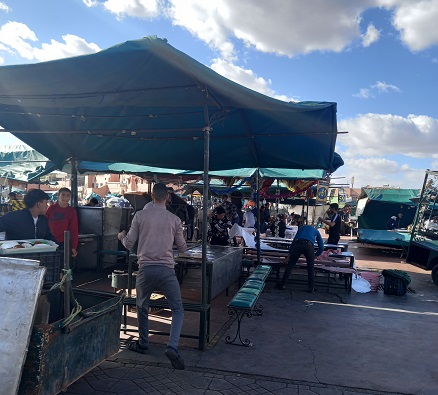
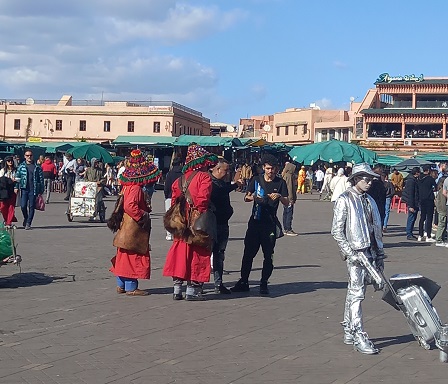
I love the contrast in the last photo above of the traditional water sellers, who pose for pictures, and the silver ‘statue’ performer.
This trip I also went to the museum at one side of the square, which is housed in the old Moroccan National Bank building, constructed in 1927.
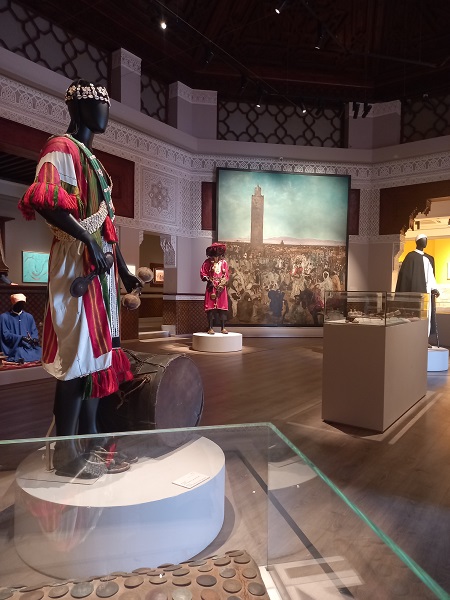
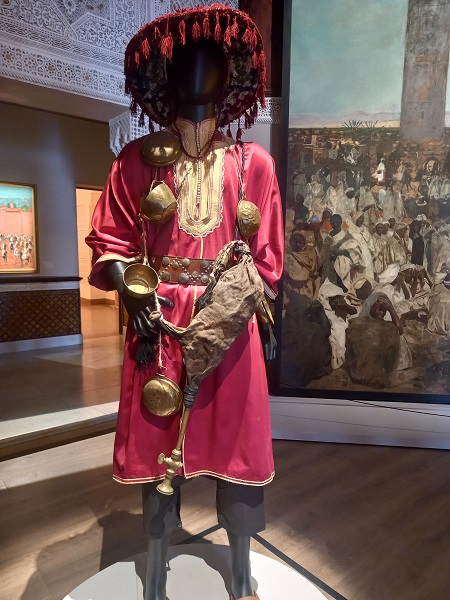
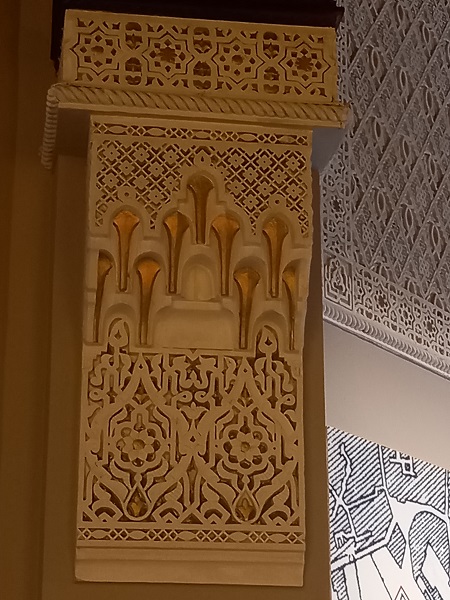
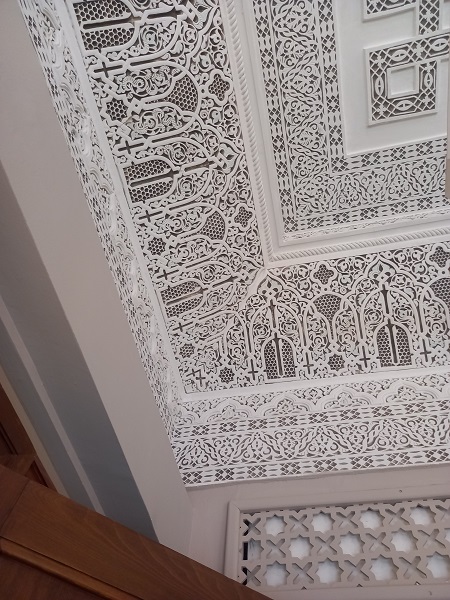
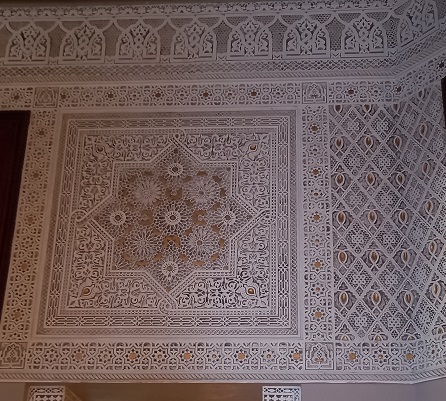
I didn’t realise that the square has been in existence since the 1600s, and has always been used as as place for musicians, storytellers and entertainers of all types. It was a lovely museum, mostly using old photos and film to document the life of the square, and really interesting.
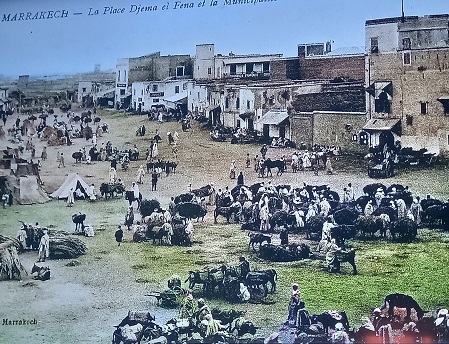
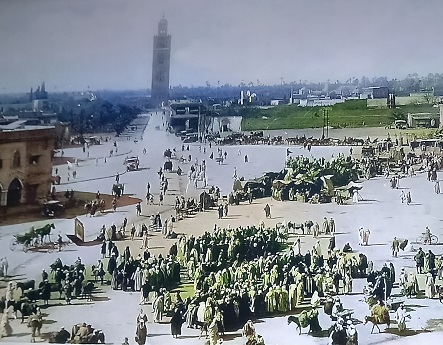
This water seller was photographed in 1966. I also saw these little roundabout seats in the woodwork museum in Fes, but am not sure when they date from.
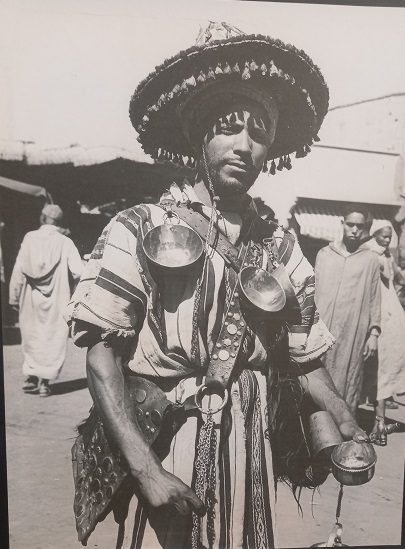
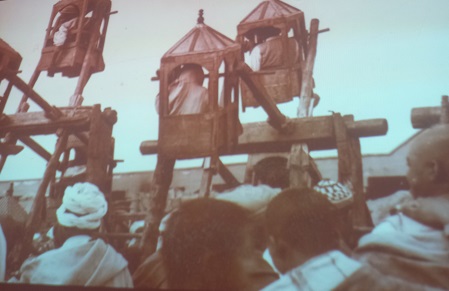
Near the square is the Koutoubia Mosque, thankfully it only sustained minor damage in the 2023 earthquake, and is being restored. It has parks and fountains all around it, so I usually had my lunch there.
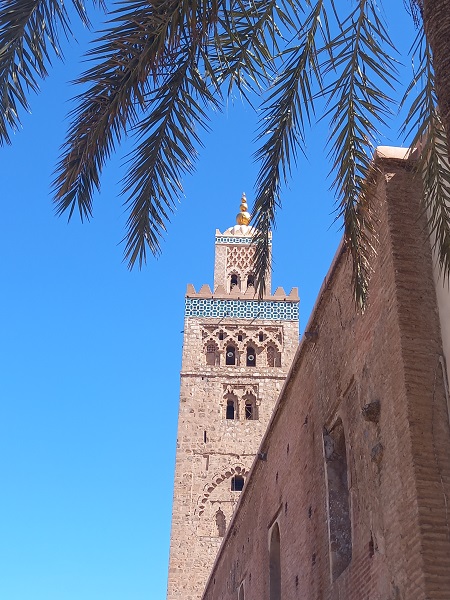
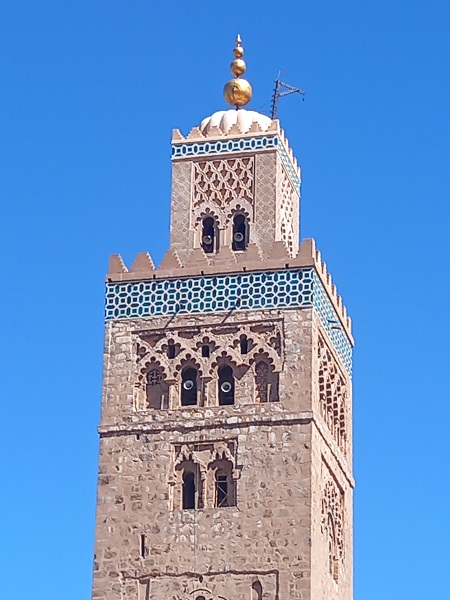
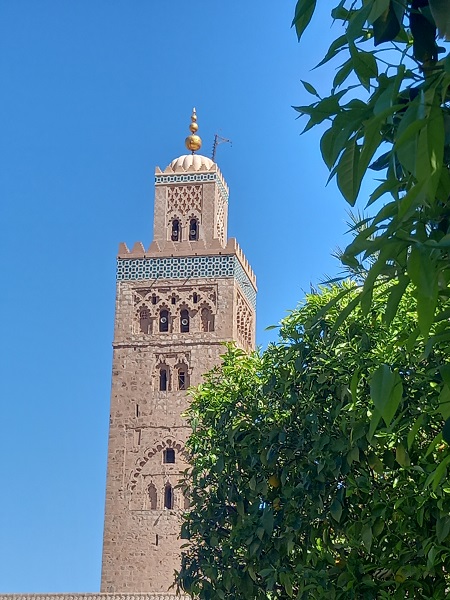
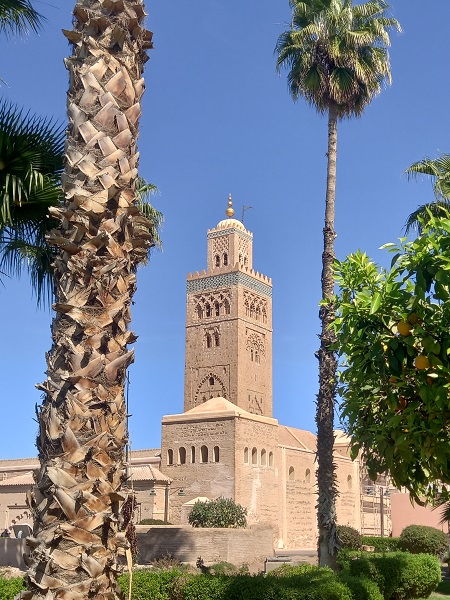
The other museum I visited linked in really well to the Jemma El-Fnaa one, the Mouassine Music Museum is in another beautifully restored mansion, which dates from the 16th century.
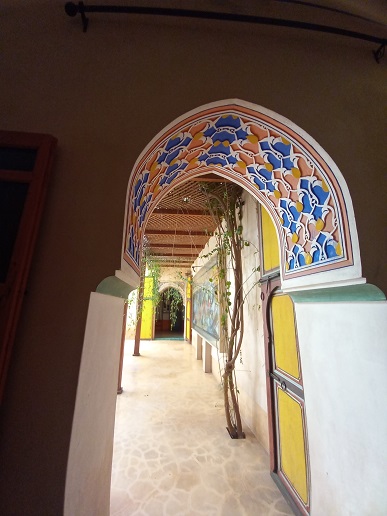
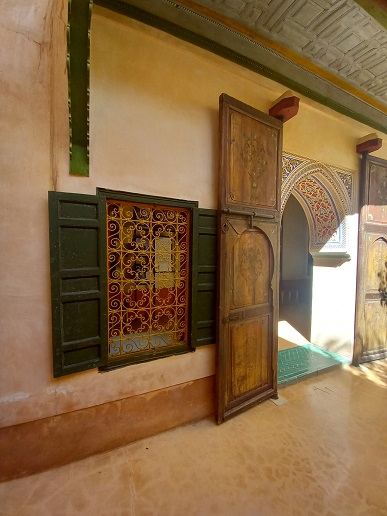
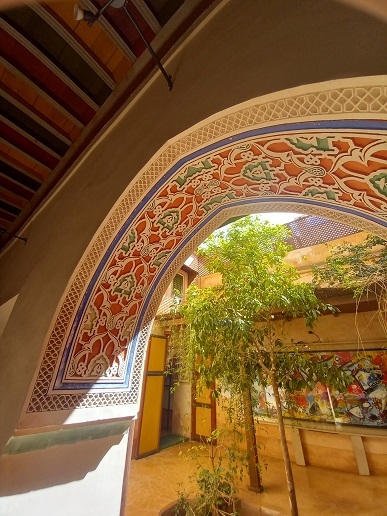
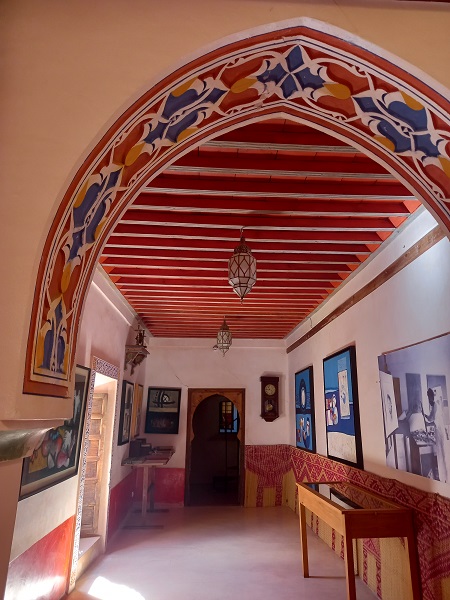

If I thought the lower floors were impressive, that was nothing compared to the guest apartment on the upper floor. They hold music sessions here every Monday evening.
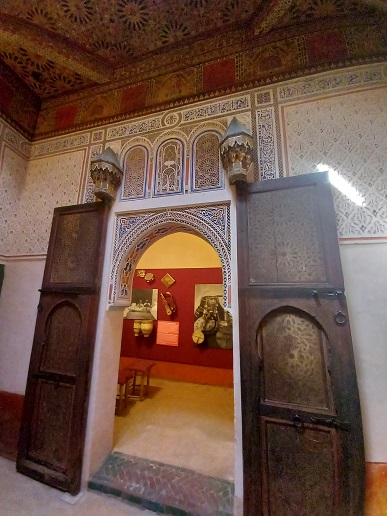
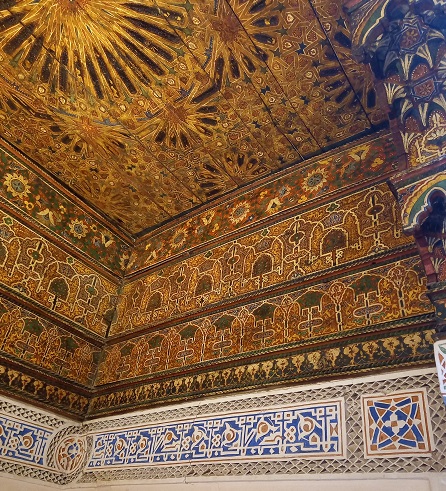
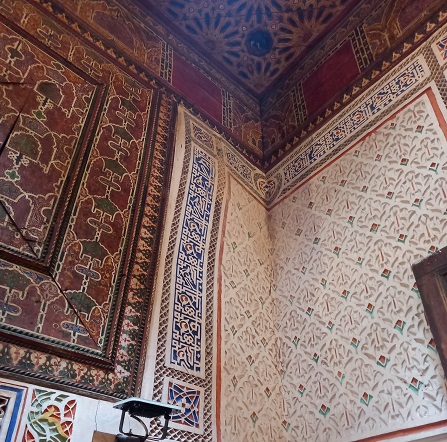
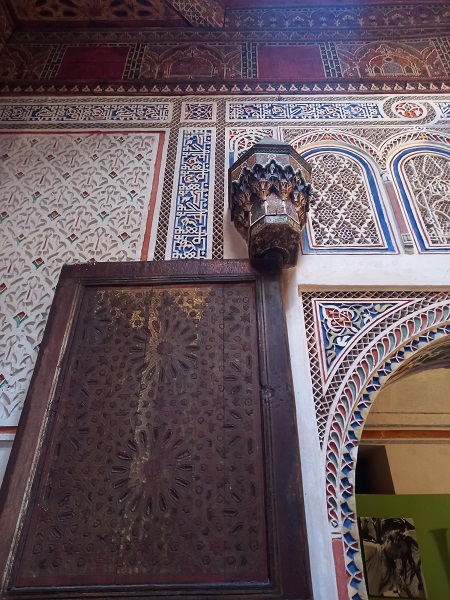
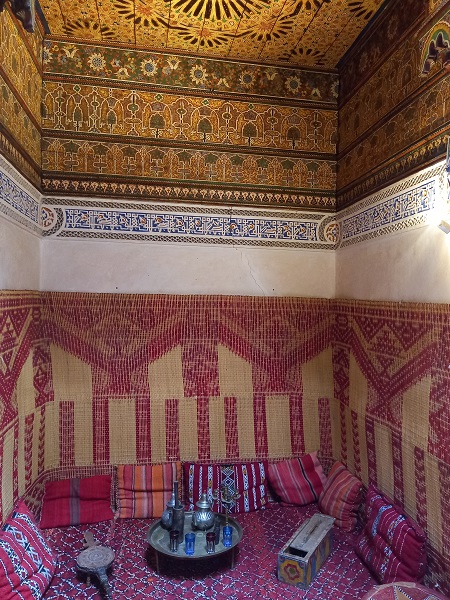
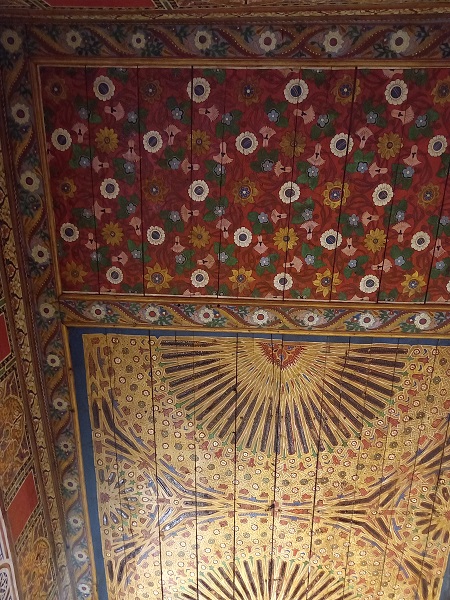
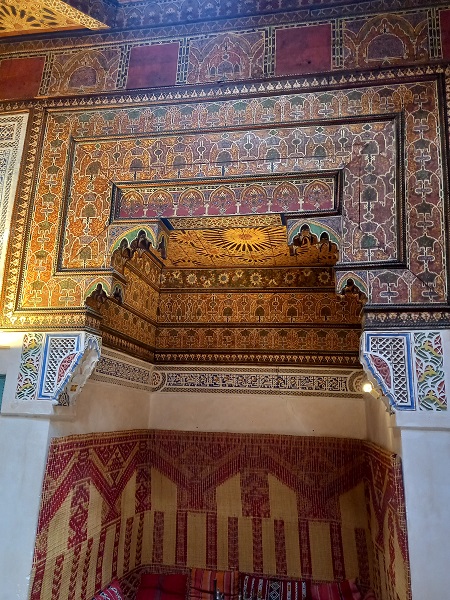
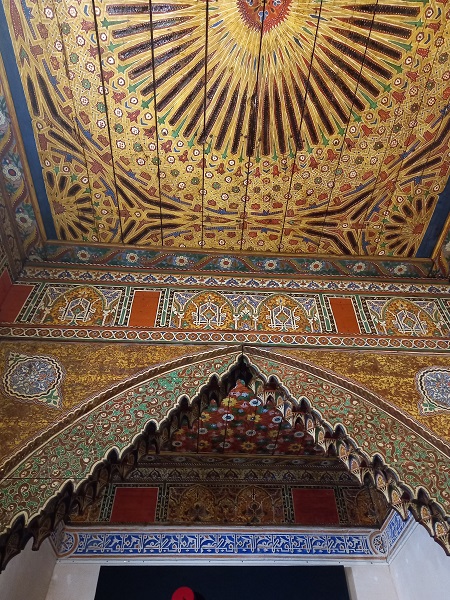
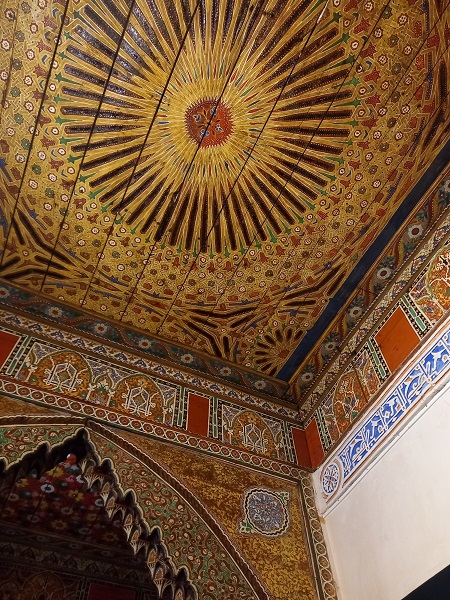
The building has been extensively restored and there were some really good videos showing the work. Apologies for the slightly grainy pictures, but this is when they were scraping off all of the plaster that had been put over the wall frieze, and cleaning the paintwork.
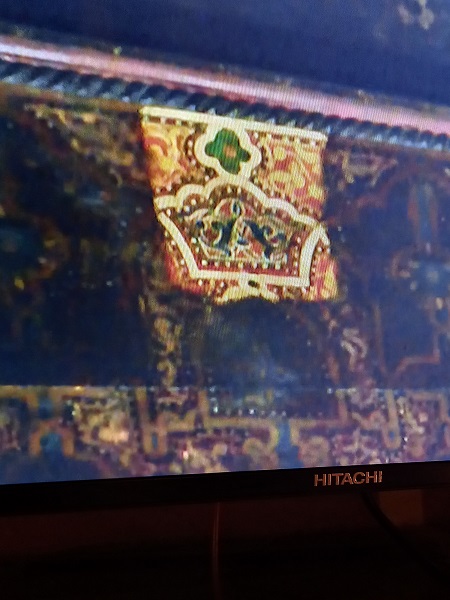
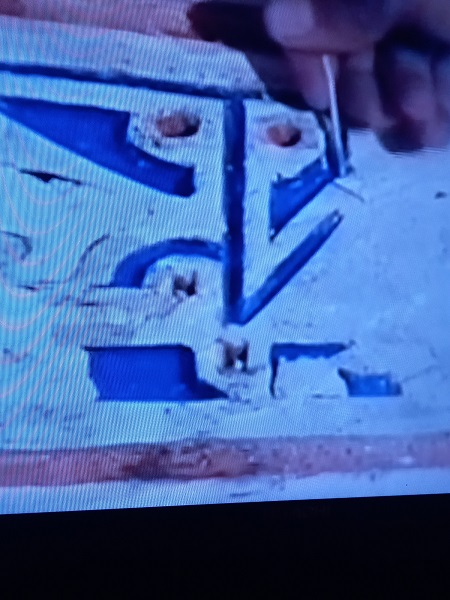
It is so brilliant to see so many skilled people being able to restore the buildings as well, there must be so much to do here, with so many wonderful places that need TLC.
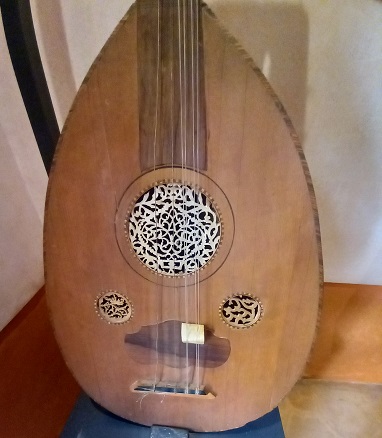
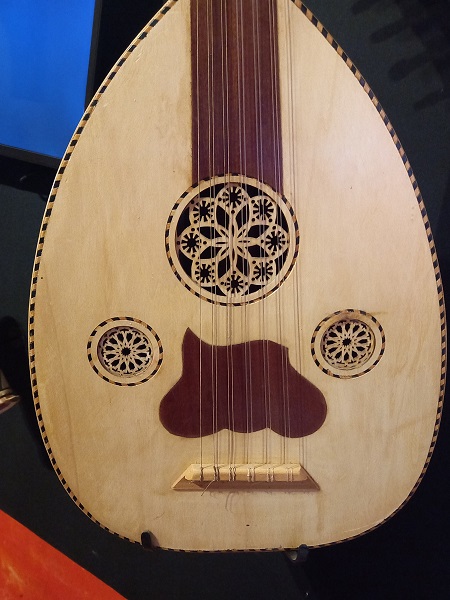
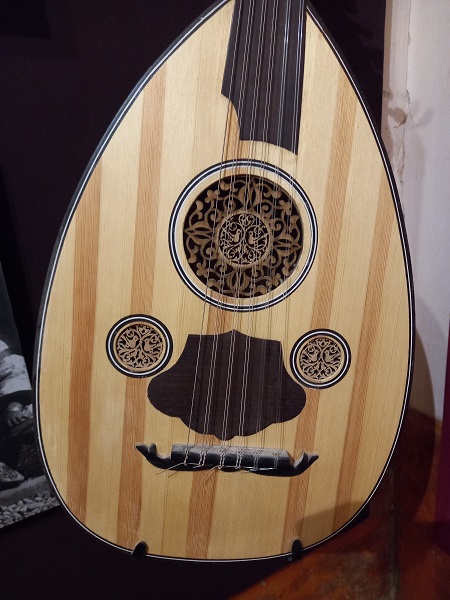
There were excellent displays of instruments, but more importantly for me, lots of videos and photos of people playing them, and dancing and a great focus on the dress of the performers.
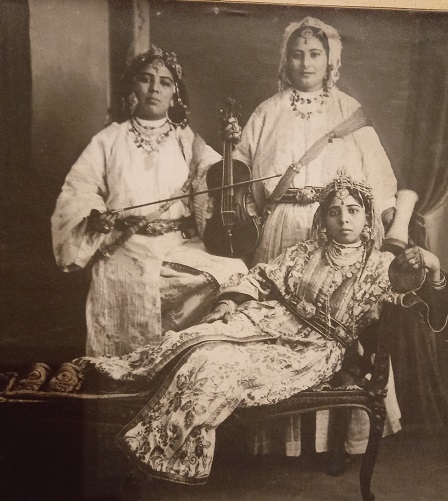
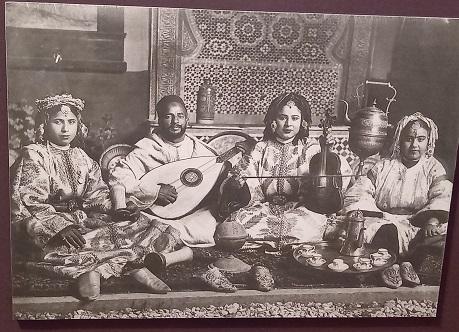
These facial tattoos, in the second photo, are fascinating. These are from some of the women in the Atlas hill tribes.
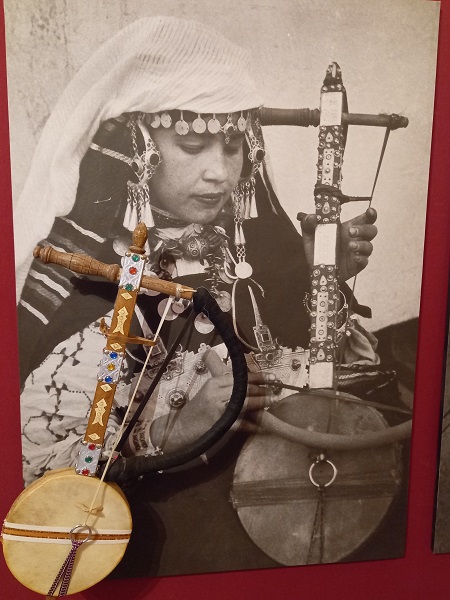
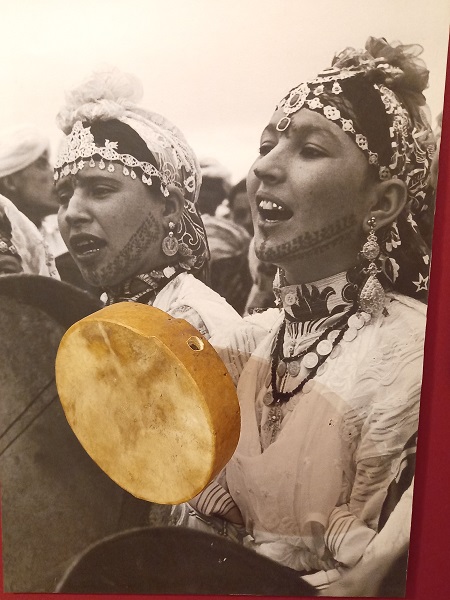
Although there was not much in the way of textiles in either museum, I did find a little bit. This gorgeous shawl had very delicate whitework embroidery. The main history museum is closed at the moment, so I expect there would have been more there.
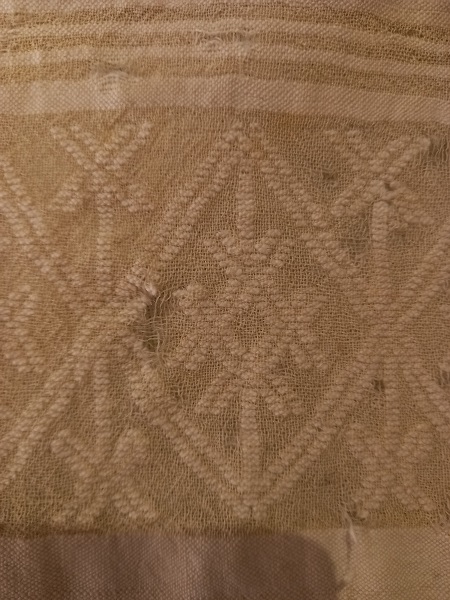
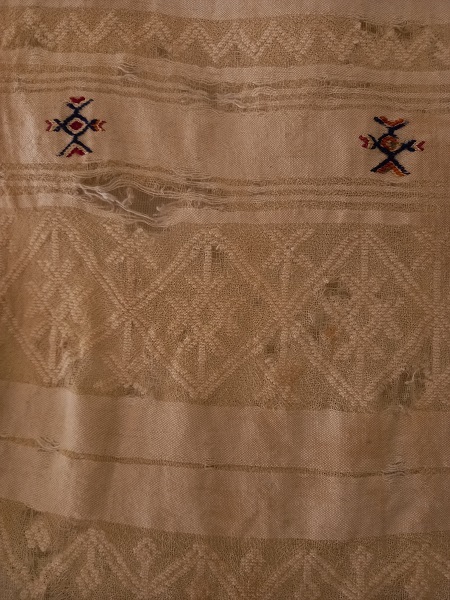
I did see quite a few shops selling traditional embroidery and textile goods as I wandered through the medina, as well as more modern kaftan shops. I was also very excited to see a little zellige workshop in the medina near my riad. I stood and watched the artisan chipping the tiles for a little while.
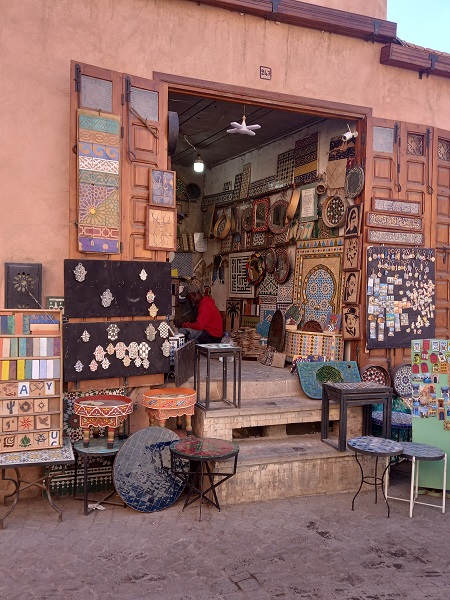
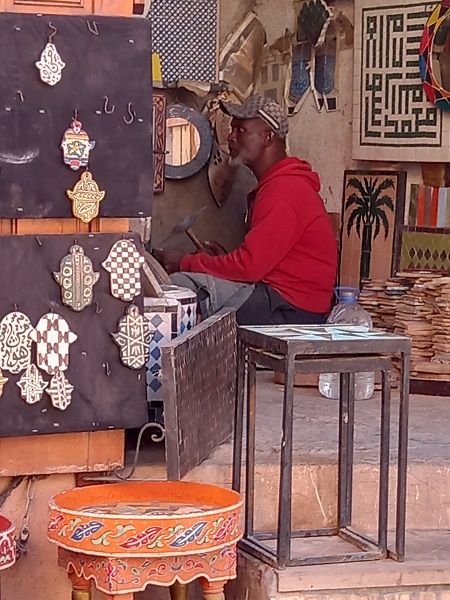
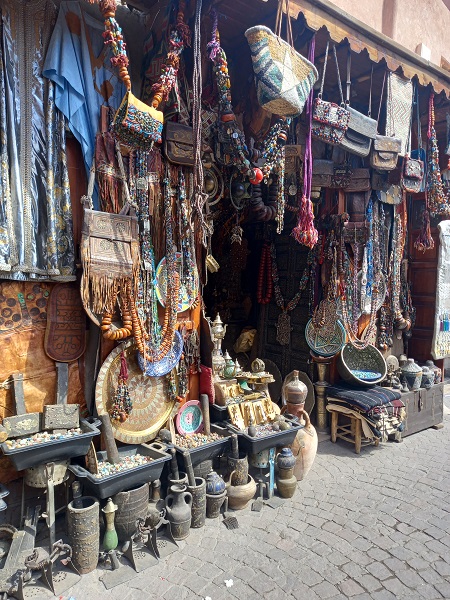
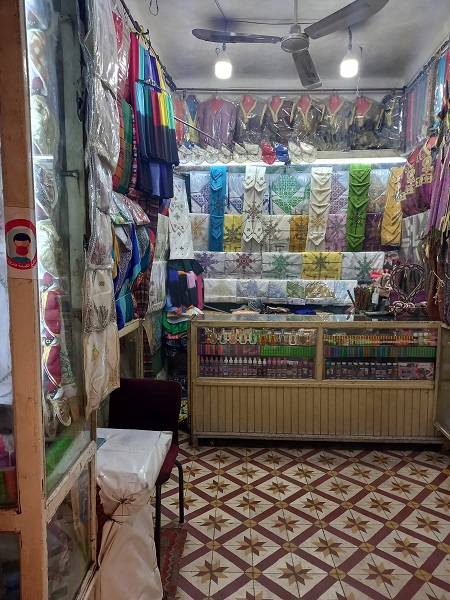
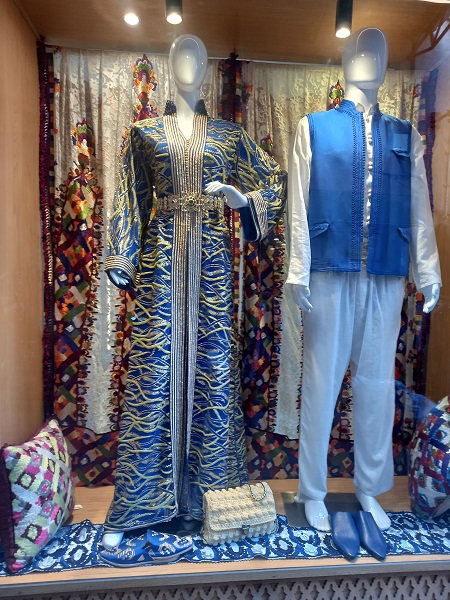
In the same way that the Hassan 2nd mosque in Casablanca is supporting training of current artisans, there is an artisan’s centre in Marrakesh, just outside the medina. It is an amazing building and contains workshops as well as places to buy the wonderful creations.
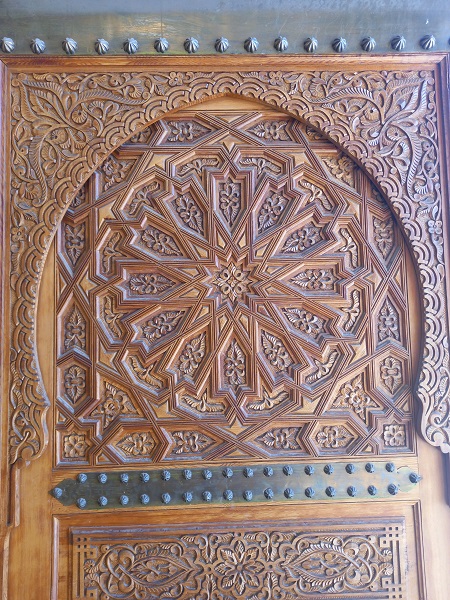
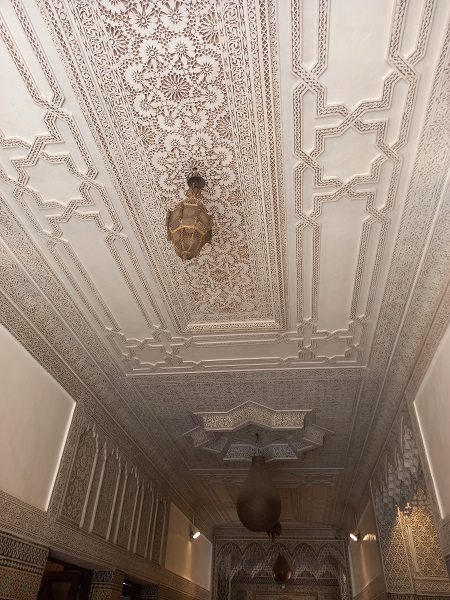
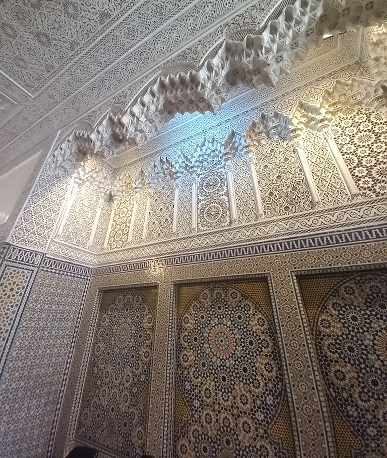
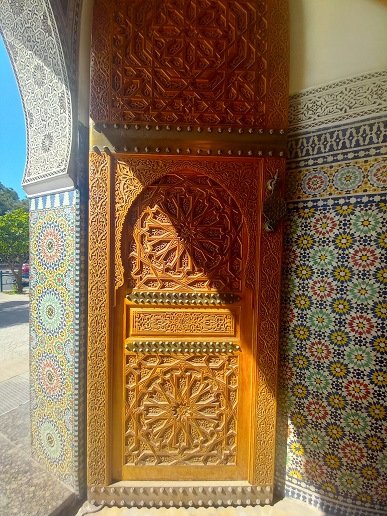
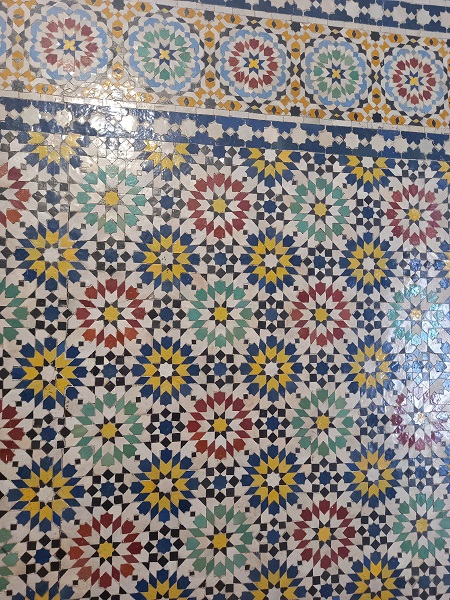
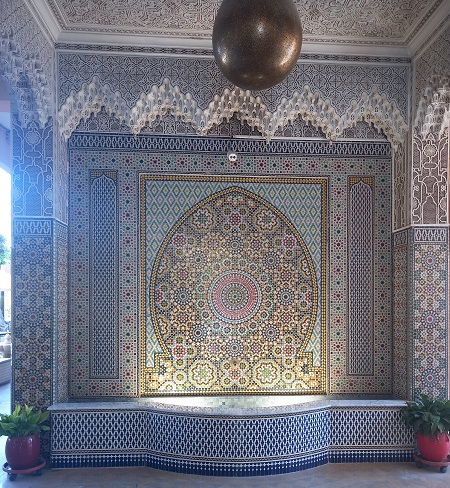
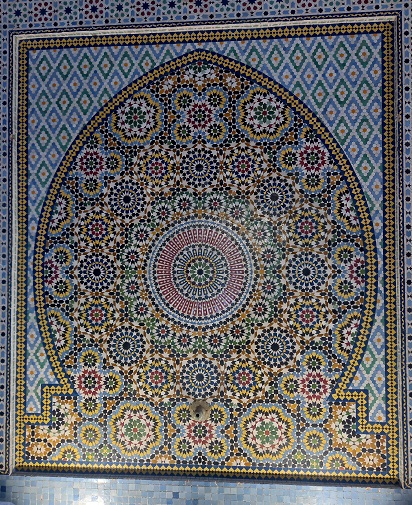
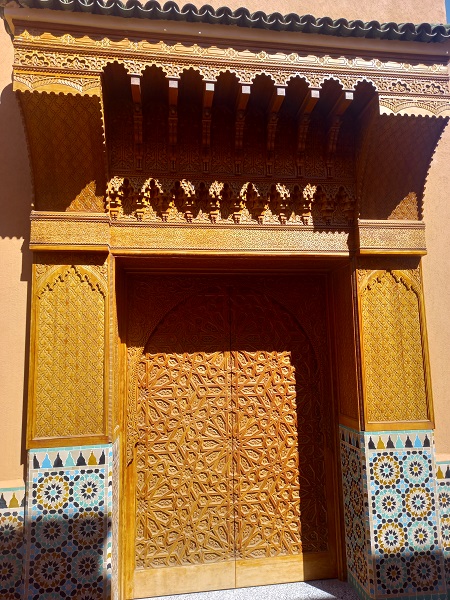
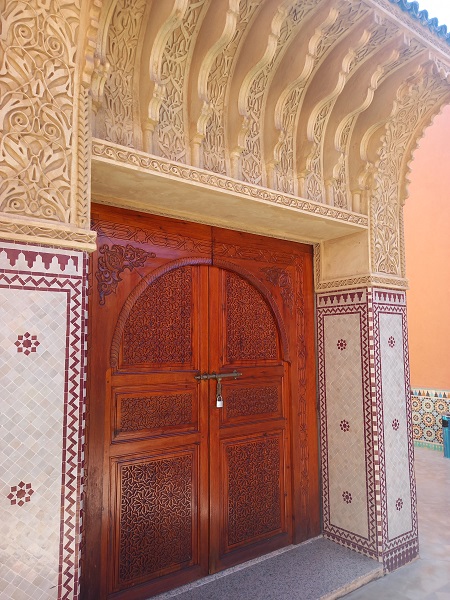
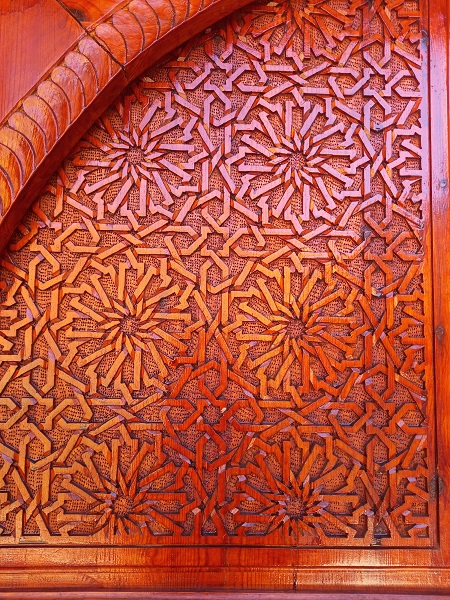
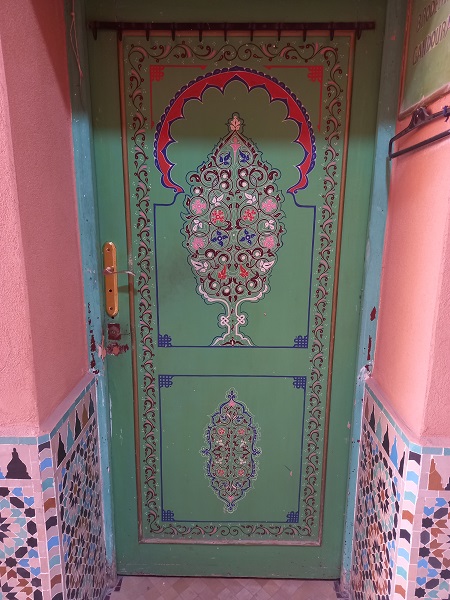
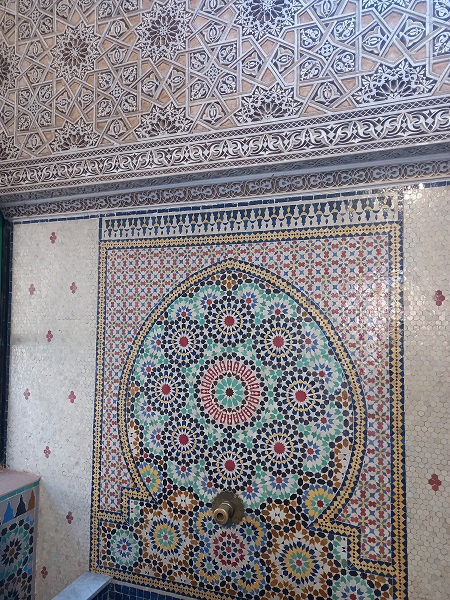
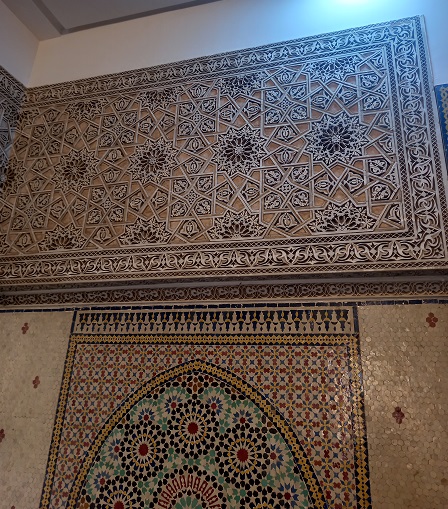
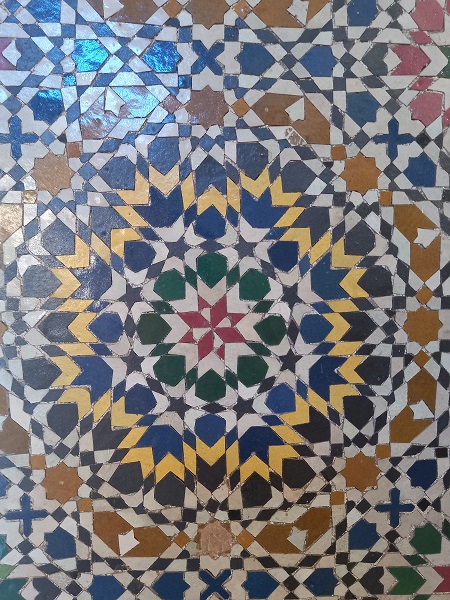
Of course I must finish my Moroccan series of blogs posts with revealing the taxi colour for Marrakesh ! It is a creamy yellow.
I think in this city there must be one taxi for every three people, I have never seen so many in my life. That does make it really easy to get around, though most of the time I enjoyed walking. You can’t stop and take door photos as easily from a taxi can you 😉
I shall finish this post with some of the wonderful doors from my last few days of wandering in the medina.
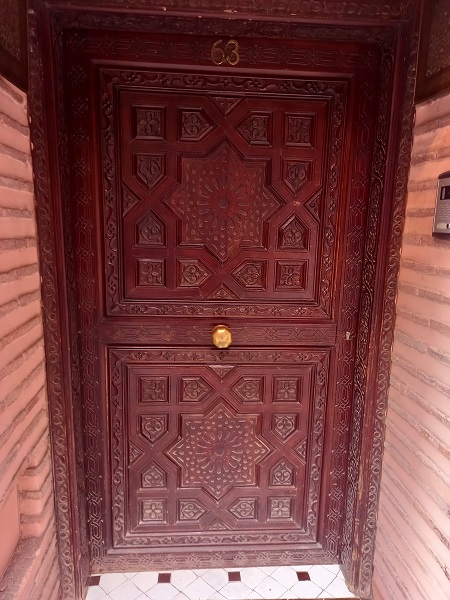
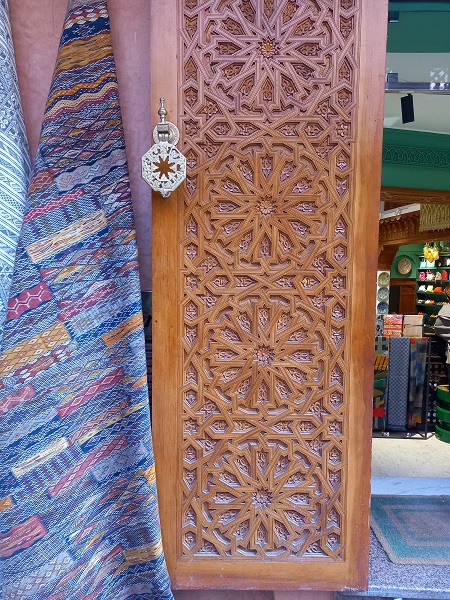
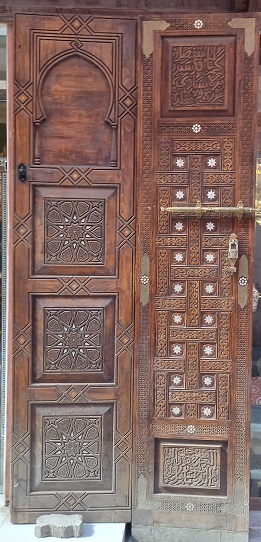
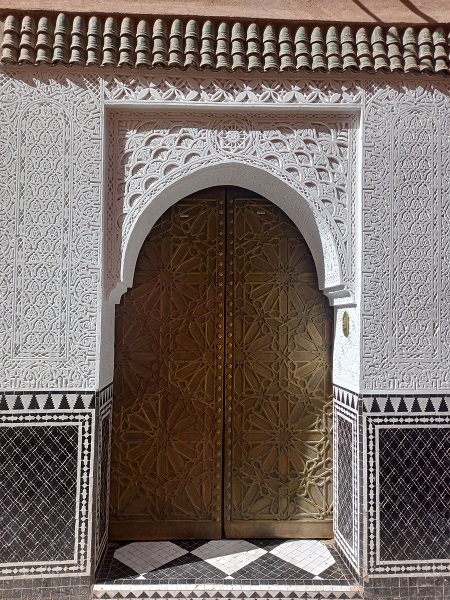
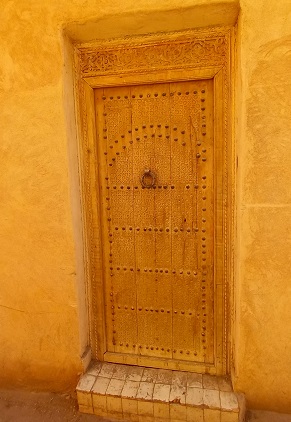
I was really thrilled to find this lovely old door open, and was able to peek inside at an amazing riad. I think it was still being restored, but what a palace!
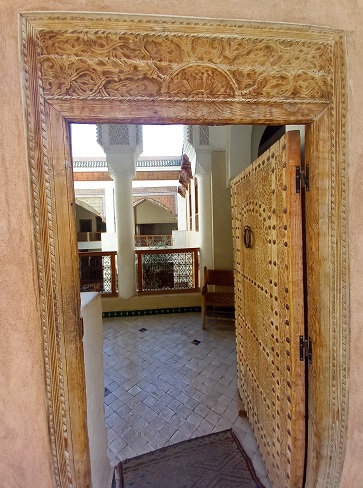
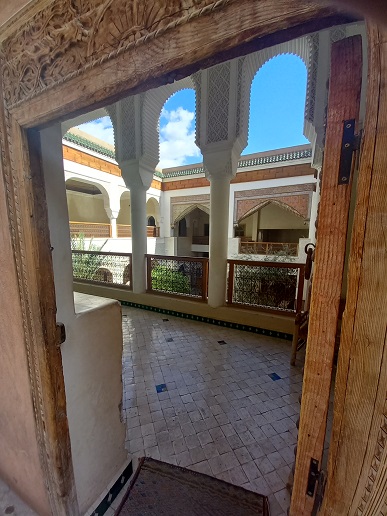
It has been such a privilege to be able to visit this country, to see where all the inspiration for the places that I love in Spain come from, and to find out more about its history. I have really enjoyed the visit and would love to go back, albeit next time with a bigger suitcase and a lottery win to spend on lamps 😉
I have had a lovely couple of days with Ellen. She came back from her month in Europe the day I left for Morocco. She visited Spain, Switzerland, France, Belgium and The Netherlands in her time away, everything from mountain cable cars, medieval Alsace towns, and chocolate museums, as well as a quick trip to Disneyland Paris where she met up with her friends. She loved everything and is now planning another month in Asia for later in the year. I am so proud of her for being a confident solo traveller and having such amazing adventures.
I am off again tomorrow, to Scotland, to spend a few days with my friend Sue, can’t wait as I am so looking forward to seeing her, and the beauty of Scotland again. I will be back next weekend, so until then, have fun, take care, stay safe, and thanks for visiting.

